Jordan Wright
December 2018
Some new and notable books arrived this year, many of which surprised me by their diversity and flat-out culinary allure. All but one are food-related, and the authors have generously consented to share some of their best recipes. See below.
The following four writers are local to the DC and Chesapeake region.
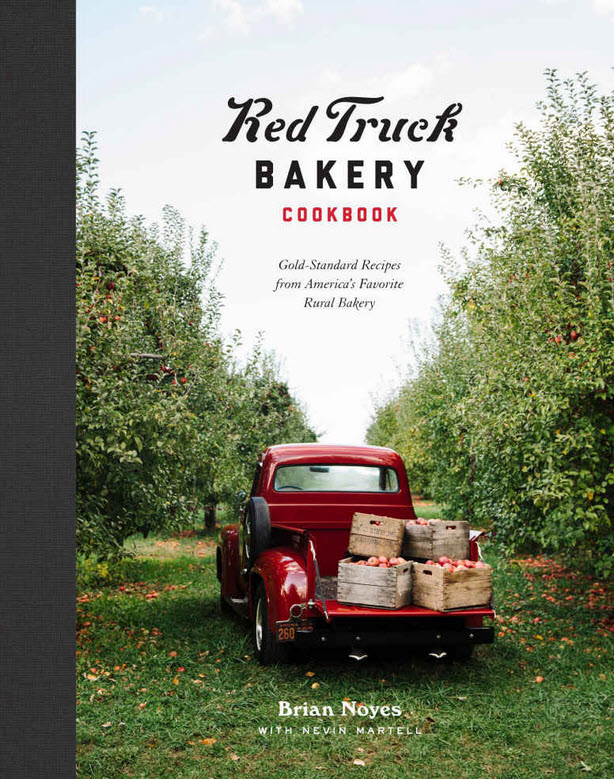 “Reprinted from Red Truck Bakery Cookbook. Copyright © 2018 by Brian Noyes. Photographs copyright © 2018 by Andrew Lee Thomas. Published by Clarkson Potter, an imprint of Penguin Random House, LLC.” ~ Brian Noyes with Nevin Martell’s “Red Truck Bakery Cookbook – Gold Standard Recipes from America’s Favorite Rural Bakery” (Clarkson Potter Publishers, 2018) has some eminently do-able show stoppers just in time for the holidays, but it’s one that you’ll be returning to time and time again for both classic and re-imagined recipes that trend Southern. Noyes runs two retail stores where all the baked goods are made by hand. The one in Warrenton, VA is in a former 1921 Esso Station the other is in Marshall, VA. The Red Truck Bakery ships all over the country. Fun fact: The Obamas, country and folk singer Mary Chapin Carpenter, Robert Duvall and Oprah are on his client list.
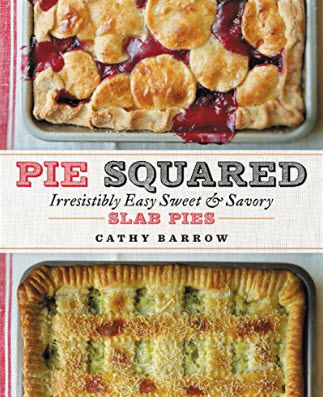
~ You’ll want to refer often to Washington Post food writer Cathy Barrow’s “Pie Squared – Irresistibly Easy Sweet & Savory Slab Pies” (Grand Central Publishing, 2018) for quick and easy slab pies perfect for hors d’oeuvres, dinner, desserts and party fare. Barrow’s Cherry Pie was the winner of a contest at the Washington Post and her recipe for slab pie broke the internet. Pro tips: Barrow uses a baking steel or pizza stone and swears she never gets soggy bottoms! She also uses ice packs or frozen peas to cool the counter before rolling out her dough.
 From left to right – Washington Post Food Editor, Bonnie Benwick, Red Truck Bakery owner and cookbook author,Brian Noyes, and Pie Squared cookbook author Cathy Barrow at a book signing at Old Town Books. – photo credit Jordan Wright ~ Newcomers Mauro Molino and Nicoletta Shane Scarnera’s “Piedmont Style – A Delectable Journey Through Northern Italy” (2018) is the dark horse of this grouping. Molino is originally from the Piedmont region. Currently Molino oversees operations at The Reserve restaurant in Alexandria, VA.
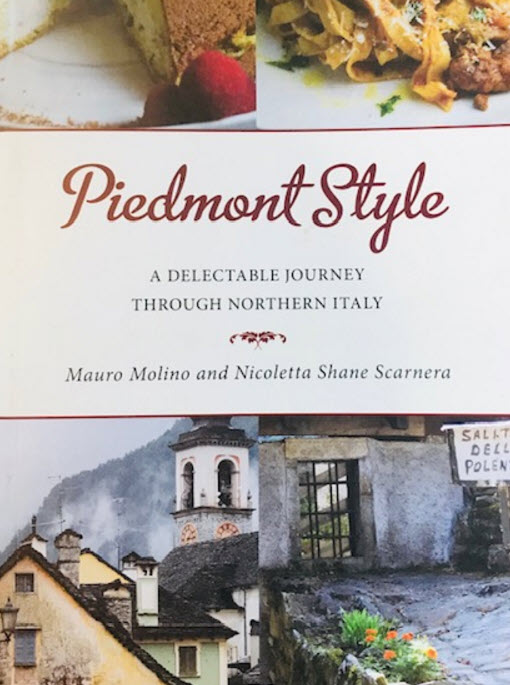
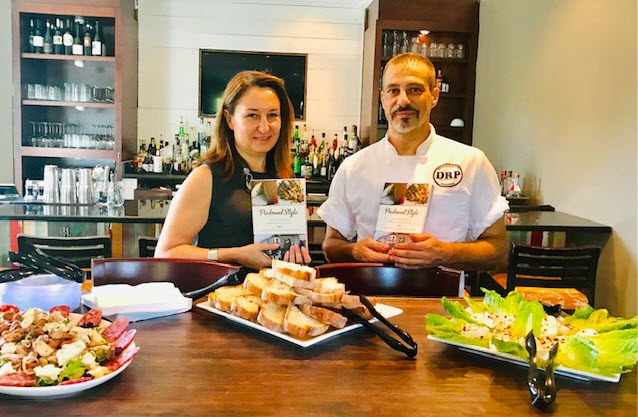 Nicoletta Shane Scarnera and Mauro Molino at a book signing for their new book “Piedmont Style” Self-published, it is a beautiful book with photographs by Scarnera of the food and terrain of the Piedmont. Divided by seasons, these recipes will keep you returning to its pages time and again for the evocative flavors of Northern Italy. Available for purchase at www.LegalizeAChef.com
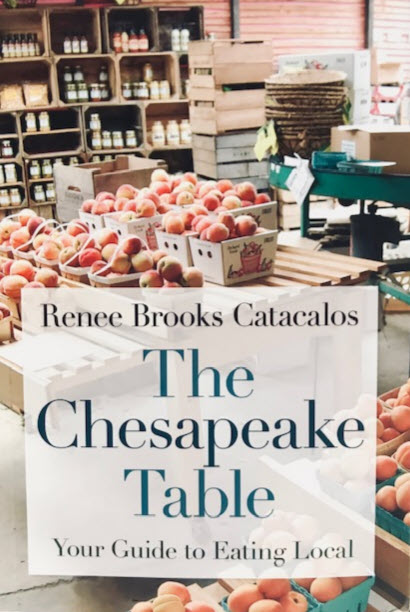
~ Renee Brooks Catacalos will be familiar to many as the former publisher of the magazine Edible Chesapeake and Deputy Director for Future Harvest – Chesapeake Alliance for Sustainable Agriculture. Coupled with regional recipes “The Chesapeake Table – Your Guide to Eating Local” (Johns Hopkins University Press, 2018) is a primer on local farms, breweries and distilleries in the Chesapeake region with an emphasis on environmentally sustainable practices.
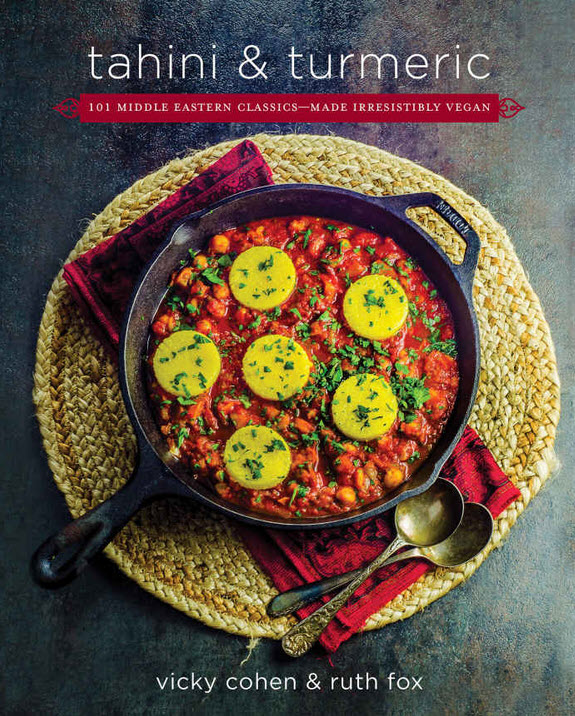
~ From to the Middle East, “Tahini & Turmeric – 101 Middle East Classics Made Irresistibly Vegan” (Da Capo Press, 2018) by sisters and veteran food writers, Vicky Cohen and Ruth Fox, is a fresh take on Middle Eastern cooking. With grains, nuts, seeds, legumes, fruits and veggies, it has all the recipes you’ll ever need to rock out plant-based meals from Spain, Syria, Morocco, Lebanon and Israel.
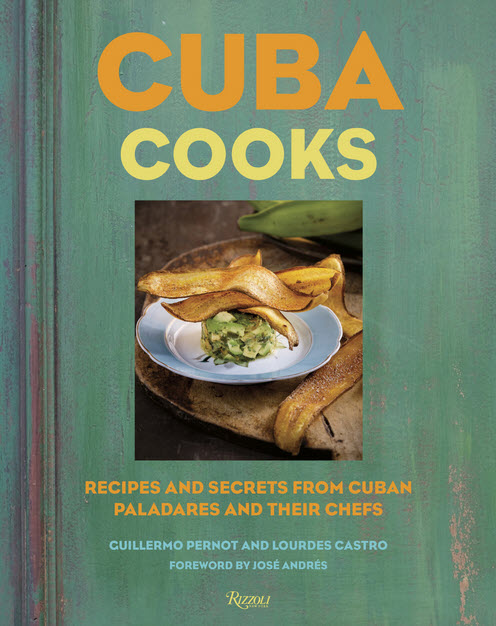
~ “Cuba Cooks: Recipes and Secrets from Cuban Paladares and Their Chefs” (Rizzoli, 2018) with foreword by José Andrés, takes you into the kitchens of the private home-based restaurants “paladares” that are scattered around Cuba. Guillermo Pernot, considered the “Maestro of Cuban Cooking” along with cookbook author and TV food celebrity, Lourdes Castro are your behind-the-scenes guides to the once imperiled cooking of this mysterious island nation.

~ Last on the list and naturally without recipes! is a fascinating read by New York Times bestselling author and full disclosure here, a personal friend, Eleanor Herman. Not to be referenced while preparing meals, “The Royal Art of Poison – Filthy Palaces, Fatal Cosmetics, Deadly Medicine and Murder Most Foul” (St. Martin’s Press, 2018) is a well-researched, headlong dive into the mysterious deaths of a host of famous historical figures from Henry VII and Michelangelo to Napoleon, Mozart and more. You’ll never watch another period drama without thinking about how kings, queens and assorted royals spent their idle hours dreaming up ways to knock each other off. Along with the tales of their demise are facts and suspicions. Leave it to this multi-disciplinary writer to dish it up in an engaging, gossipy style that can make even the driest subject stand your hair on end.
Recipes
From the Red Truck Bakery Cookbook
Rooster’s Pepper Jelly
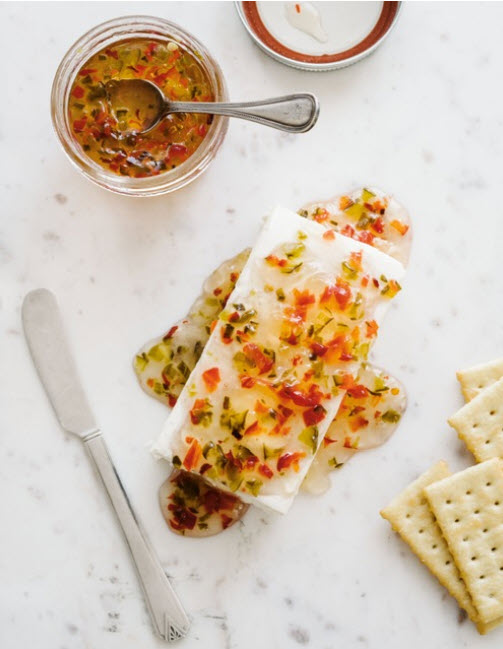
Makes 8 cups or 8 half-pint jars
- 2 cups finely chopped green bell peppers (about 2 medium)
- 2 cups finely chopped red bell peppers (about 2 medium)
- 1 cup finely chopped seeded fresh hot peppers (about 10)
- 3 cups cider vinegar
- 12 cups sugar
- 1 tablespoon red pepper flakes
- 2 (3-ounce) packages liquid pectin
- In a large, tall-sided nonreactive pot, combine the green bell peppers, red bell peppers, hot peppers, vinegar, sugar, and red pepper flakes and bring to a rolling boil over high heat. Add the pectin and return to a rolling boil for exactly 2 minutes to blend and develop the flavors. While the jelly is cooking, use a brush dipped in water to clean off any that bubbles up the sides and sticks to the pot.
- Remove the pot from the heat, let the mixture cool, and refrigerate overnight in a half-gallon jar or covered bowl to achieve a jelly consistency. The jelly will keep in the refrigerator for about 1 month.
- If you’d like to save the jelly for future use, sterilize 8-ounce jars, rings, and lids according to the manufacturer’s directions. Set a raised wire rack on a dishtowel or layer of newspaper. Carefully pour the jam into the sterilized jars, leaving ½ inch of space at the top of the jars. Wipe the rims of the jars clean and seal tightly. Transfer the jars to a canning pot and add water to cover by 1 to 2 inches. Boil the jars for 10 minutes, sealing them according to the manufacturer’s directions. Carefully remove the jars from the water and place on the wire rack over the towel or newspaper. Let stand for several hours until cooled.
- Unopened jars of jelly will keep at room temperature for about 1 year.
Guinness Stout and Chocolate Irish Cake with Baileys Irish Cream Frosting
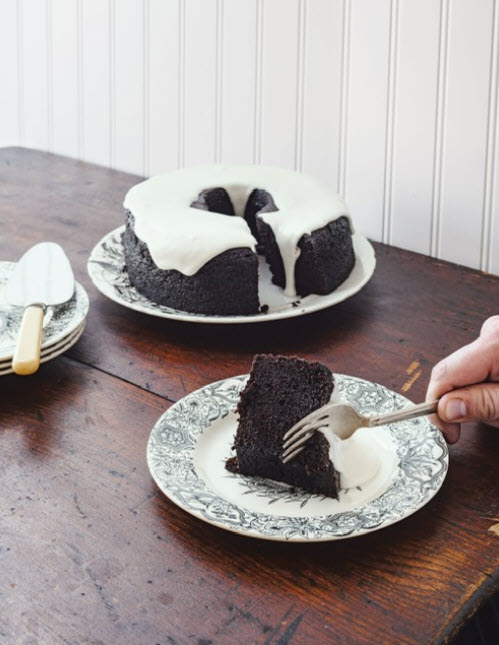 Makes one 10-inch Bundt cake Makes one 10-inch Bundt cake
Cake:
- Nonstick cooking spray
- 1 cup unbleached all-purpose flour, sifted, plus more for dusting
- ¼ cup canola oil
- ½ cup Guinness stout
- 1 tablespoon plus 1½ teaspoons unsalted butter, melted
- ½ cup unsweetened cocoa powder
- 1 cup granulated sugar
- ½ cup sour cream
- 1 large egg
- 1½ teaspoons pure vanilla extract
- 2 teaspoons instant vanilla pudding mix
- 1 teaspoon baking soda
- ½ teaspoon baking powder
- Frosting:
- 1¾ cups confectioners’ sugar
- ¼ cup Baileys Irish Cream coffee creamer
- Preheat the oven to 350°F. Coat a 10-inch Bundt pan with nonstick spray and dust it with flour, tapping out any excess.
- Make the cake: In a large bowl, whisk together the canola oil, Guinness, and melted butter until well blended. Whisk in the cocoa powder and granulated sugar.
- In the bowl of a stand mixer fitted with the paddle attachment, beat together the sour cream, egg, and vanilla at medium speed until just combined. Add the Guinness mixture and mix until combined. Add the flour, pudding mix, baking soda, and baking powder. Beat until smooth.
- Transfer the batter to the prepared pan. Smooth the top with a spatula. Bake for 35 to 40 minutes, turning the pan after 20 minutes, until a toothpick inserted into the center of the cake comes out clean and the middle of the cake bounces back when touched. Let cool completely, then turn the cake out of the pan onto a cake stand or platter.
From Tahini & Turmeric
Creamy Tahini Cheesecake with Pistachio Crust and Fresh Pomegranate
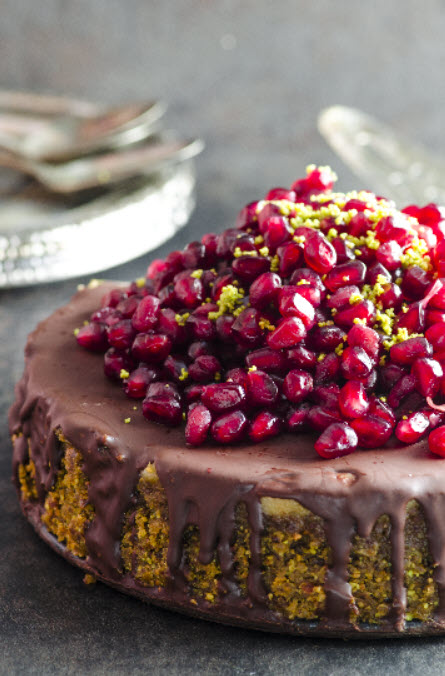
We’ve been making dairy-free cheesecake for years, and we’ve always used dairy-free cream cheese as our base. That is until we discovered how ground, soaked cashews have the extraordinary ability to mimic pretty much every single dairy product from ricotta to cream cheese. Cashews are incredibly versatile. In this recipe, they work beautifully with the tahini (which also adds a subtle nutty flavor), and the result is a rich and creamy cheesecake. The slightly tart pomegranate seeds cut through the creaminess of the cashew and tahini base, also providing a touch of crunch. To further accentuate the Middle Eastern flavors of this luscious dessert, we make the crust with dates and pistachios.
This recipe works best when prepared in a 7-inch springform pan. You can use a bigger mold if that is what you have on hand, but take into consideration that the cheesecake will not be as tall.
The leftover cheesecake can be frozen in an airtight container for up to a month. We recommend removing the pomegranate seeds from the top before freezing.
Prep time: 1 hour 45 minutes (includes freezing time)
Makes one 7-inch cheesecake
INGREDIENTS:
- 2 cups raw cashews
- 1 1/2 cups boiling water
- 1 cup plus 2 tablespoons shelled pistachios
- 20 pitted dates, or 10 pitted Medjool dates
- 1/2 cup plus 1 tablespoon tahini
- 1/3 cup pure maple syrup
- 3 tablespoons coconut oil, melted
- 3 tablespoons unsweetened nondairy milk
- 1 tablespoon freshly squeezed lemon juice
- 1/2 teaspoon pure vanilla extract
TOPPING:
- 1 cup vegan chocolate chips
- 2 teaspoons coconut oil
- 1 cup pomegranate seeds
EQUIPMENT:
Place the cashews in a heatproof bowl. Add the boiling water. Soak for 30 minutes and then drain.
In the meantime, prepare the crust: Combine 1 cup of the pistachios, dates, and 1 tablespoon of tahini in a food processor. Pulse until well combined and transfer the mixture to a 7-inch springform pan. Press down evenly, so the mixture comes about halfway up the sides of the pan. Refrigerate until you’re ready to use it.
Prepare the filling: Combine the drained cashews, 1/2 cup of the tahini, and the maple syrup, melted coconut oil, nondairy milk, lemon juice, and vanilla in the food processor. Pulse until smooth, scraping the sides occasionally. Transfer the mixture to a bowl and fold in the remaining 2 tablespoons of pistachios. Pour the filling over the prepared crust and freeze for 1 hour.
Remove the cheesecake from the freezer and refrigerate until ready to serve.
Right before serving, prepare the chocolate topping: Place the chocolate chips and coconut oil in a medium-size, heatproof glass bowl. Fill a medium-size saucepan halfway with water and bring to a boil over high heat. Lower the heat to simmer and place the bowl of chocolate over the saucepan, making sure the boiling water doesn’t touch the bottom of the bowl. Let the chocolate melt, stirring frequently. Alternatively, melt the chocolate in a microwave, at 20-second intervals on standard power until completely melted, making sure to stir well each time (this will prevent the chocolate from seizing).
Drizzle the melted chocolate on top of the cheesecake. Garnish with fresh pomegranate seeds.
Cumin Jasmine Rice with Almonds, Walnuts, and Cashews
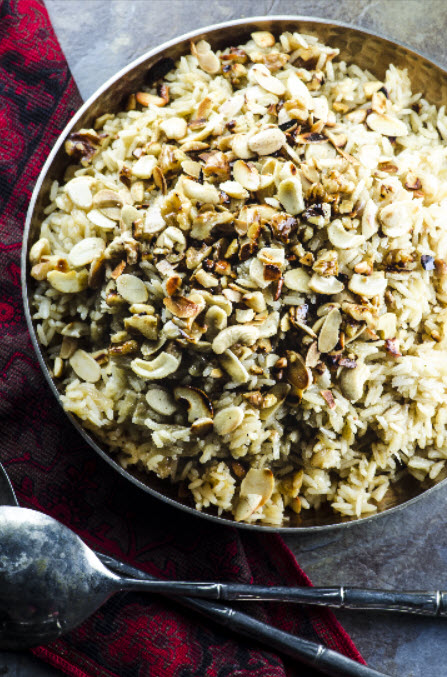
Smoky cumin, slow-cooked sweet onions, and rich toasted nuts add so much flavor to this dish, you will never look at rice the same way again. It’s the perfect accompaniment for our Roasted Cauliflower with Green Tahini or served alongside some plain Quinoa Harissa Meatless Meatballs. This dish is best when served fresh, but you can store the leftovers in the refrigerator for up to two days.
Prep time: 20 minutes
Cook time: 1 hour 30 minutes
Makes 4 to 6 servings
Ingredients:
- 1/4 cup olive oil
- 3 large sweet onions, sliced
- 1 3/4 teaspoons salt
- 1 3/4 teaspoons ground cumin
- 1 1/2 cups uncooked jasmine rice
- 2 teaspoons neutral-flavor oil (such as sunflower, avocado, or grapeseed)
- 1/4 cup sliced raw almonds
- 1/4 cup raw walnuts, chopped
- 1/4 cup raw cashews, roughly chopped parsley and pomegranate seeds, for garnish (optional)
Heat the olive oil in a deep, medium-size skillet with a lid. Add the onions and cook over medium-low heat for 1 hour, or until golden brown, stirring frequently (you might need to add some water during the cooking process to prevent them from burning).
Add 2 1/3 cups of water, and the salt and cumin and bring to a boil. Add the rice and stir well. Bring to a boil again, lower the heat to low, cover, and simmer for 25 minutes.
Uncover the skillet and gently fluff up the rice with a fork. Replace the lid and remove the skillet from the heat. Let sit for 10 minutes.
In the meantime, heat the neutral-flavor oil in a separate skillet over medium heat. Add the almonds, walnuts, and cashews and toast them for 2 to 3 minutes, stirring constantly, or until golden brown, watching them carefully to prevent them from burning.
Once the rice is ready, transfer it to a large serving platter and top with the toasted nuts. Garnish with parsley and pomegranate seeds, if using.
Time-saving tip – Cook the onions one to two days in advance, and refrigerate them until they are ready to be used.
Excerpted from Tahini & Turmeric: 101 Middle Eastern Classics—Made Irresistibly Vegan by Vicky Cohen and Ruth Fox. Copyright ©2018. Available from Da Capo Lifelong Books, an imprint of Perseus Books, LLC, a subsidiary of Hachette Book Group, Inc.
From Pie Squared
No-Campfire-Necessary S’Mores Slab Pie with a Graham Cracker Crust
Serves 15 to 18
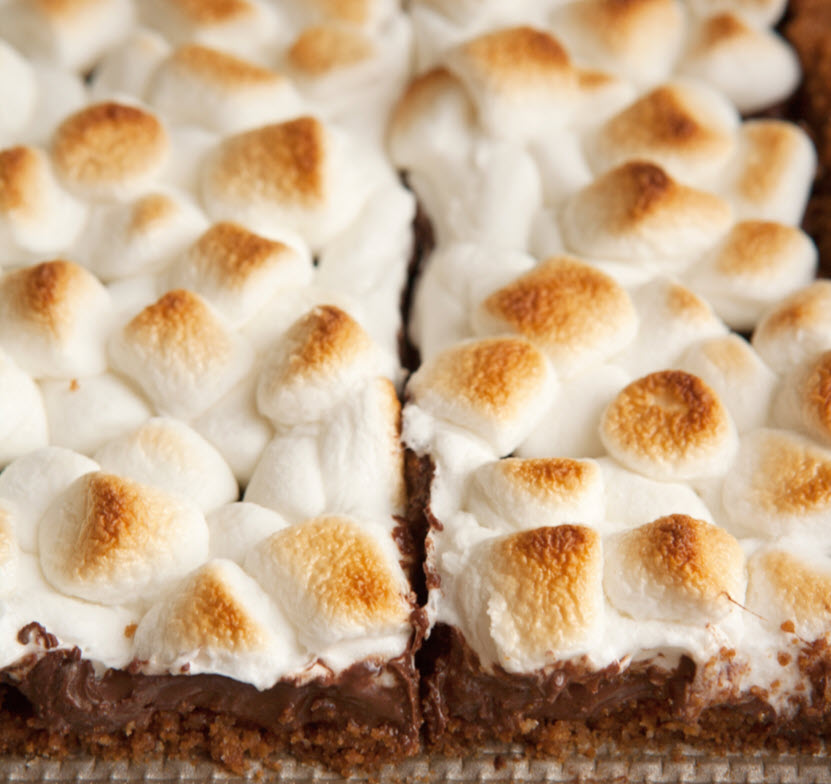 “Pie Squared” – S’mores expect some of you may slap your forehead when you read this recipe and say, “Why didn’t I think of that?” Indeed, it’s so easy and straightforward, it’s almost sinful. There is nothing to beat the smell of wood smoke and the fear your perfectly bronzed and oozy marshmallow will slip from the stick, but this S’Mores Slab stands in when the campfire is miles away. This pie must be baked on top of a hot surface to achieve a firm base.
Make Ahead: The crust may be baked and the chocolate layer spread over the crust a day or two in advance. Keep refrigerated until ready to add the marshmallows.
Graham Cracker Crust
- 9 graham crackers (143 g), crushed to a powder (about 1 1⁄4 cups)
- 6 tablespoons (85 g) unsalted butter, melted
- 1/3 cup (67 g) granulated sugar
- 1 teaspoon kosher salt
Filling
- 2 cups (12 ounces, 300 g) semisweet chocolate chips
- 5 cups (10 ounces, 285 g) mini marshmallows .
For the crust: Heat the oven to 350F and place a baking stone, Baking Steel, or inverted baking sheet on the center rack to heat. Place the graham crackers in a ziptop bag and bash them with a rolling pin until they are in small pieces but not powdered, or use your hands to crush them. Mix the cracker crumbs, butter, sugar, and salt together using your hands or a firm silicone spatula. Knead and press the mixture until it is cohesive and the crumbs are thoroughly buttered. Dump the dough into the slab pie pan and press across the bottom, but not up the sides of the pan. Press down using a metal cup measure, or the flat bottom of a glass, until the crust feels firm to the touch. Slide the pan into the center of the oven, on top of the steel, stone, or baking sheet, and bake until lightly browned, about 10 minutes.
To fill the pie: Remove the crust from the oven; it will still feel damp and soft. Immediately scatter the chocolate chips evenly across the surface of the pie and pop the pie back into the oven for no more than 2 minutes, until the chocolate is softened. With an offset spatula, spread the chocolate evenly across the crust. Refrigerate for at least 2 hours or up to 2 days.
Place a rack at the top of the oven and heat the broiler to high. Scatter the marshmallows thickly across the top of the pie. Slide the pan under the broiler and watch carefully. It takes about 2 minutes to brown beautifully. It takes about 4 minutes to incinerate.
While still hot from the oven, warm a long slicing knife under hot water, make a cut and, wiping and warming the knife between each subsequent cut, portion the pie into serving pieces.
Swaps:
• Try bittersweet chocolate instead of semisweet.
• A swipe of caramel atop the crust and below the chocolate is, plain and simple, naughty.
Just-Like-Artichoke-Dip Slab Pie with a Cream Cheese
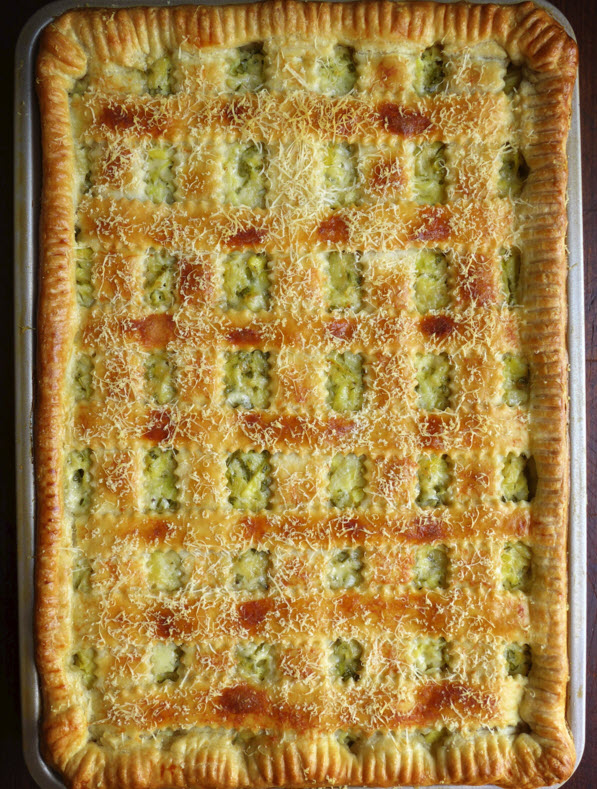 “Pie Squared” Artichoke Dip Slab Pie Serves 15 to 24
We all have our comfort foods, and artichoke dip is mine. It’s soothing and familiar and cheesy and goes with a rainy day and a Netflix binge. Next time, invite a few friends over, wrap that familiar combination in a tender cream cheese crust, and make a pie. Select artichokes packed in water, not marinated or in a vinegar brine. Chop the artichokes into small pieces, pressing the liquid out as you go. The drier the artichokes, the better the texture and flavor of the filling. Add a lattice or open-work crust that you dusted with cheese, cut the pie into tiny bite-sized pieces, and you have a fancy pass-around for a swanky cocktail party.
Make ahead – Combine the filling ingredients up to one day ahead.
Cream Cheese Crust
- 2 1⁄2 cups plus 2 tablespoons (325 g) all-purpose flour
- 8 tablespoons (113 g) unsalted butter, cubed and frozen for 20 minutes
- 8 tablespoons (113 g) cream cheese, cubed and refrigerated for 20 minutes 1⁄4 teaspoon kosher salt
- 1⁄2 cup (120 ml) ice water
Filling
- 2 (14-ounce) cans artichoke hearts in water (800 g), drained and chopped 3⁄4 cup (170 g) mayonnaise (not low-fat)
- 1 cup (100 g) grated Parmigiano Reggiano
- 1⁄2 cup (30 g) chopped fresh flat-leaf parsley
- 1⁄2 cup (30 g) snipped fresh chives 2 garlic cloves, grated or minced Juice of 1 lemon
- 1⁄2 teaspoon freshly ground pepper 1 egg yolk
- 1 tablespoon cold water
- 3 tablespoons finely grated Parmigiano Reggiano
For the crust: In the food processor, pulse the flour, butter, cream cheese, and salt until the fats are in small pieces coated with flour, about 15 times. Add the water all at once and process until the mixture almost forms a ball. Form the dough into a 6- by 4-inch rectangle using plastic wrap and a bench scraper to firmly press the dough into a cohesive form. Wrap tightly and refrigerate a minimum of 4 hours.
Remove the dough from the refrigerator and allow it to warm slightly. Divide the dough into two pieces, one slightly larger than the other. Roll out the larger piece to 11 by 15 inches and place in the slab pie pan, pressing it into the corners of the pan and allowing the excess to drape over the sides. Refrigerate. Roll out the second piece of dough to 10 by 14 inches, place it on a lightly floured sheet of parchment, and refrigerate.
Heat the oven to 400F; if you have one, place a baking stone, Baking Steel, or inverted baking sheet on the center rack to heat.
For the filling: Combine the artichokes, mayonnaise, 1 cup Parmigiano,
the parsley, chives, garlic, lemon juice, and pepper and scoop into the chilled bottom crust. Cut lattice strips from the chilled top crust. Spread the filling evenly in the bottom crust and lattice the top.
Combine the egg yolk and water in a small bowl. Dip a pastry brush into the egg wash and lightly glaze the lattice. Scatter the 3 tablespoons Parmigiano over the surface of the pie. Slide the pie into the oven (on top of the steel, stone, or baking sheet, if using) and bake
until the filling is bubbly and the crust is browned and glossy, 45 to 50 minutes. Cool slightly before serving.
Swaps:
- Add a small can of green chiles or small jar diced pimentos, drained, to the filling—or add both.
- Top with crushed Bugles.
Excerpted from the book PIE SQUARED: Irresistibly Easy Sweet & Savory Slab Pies by Cathy Barrow. Copyright © 2018 by Cathy Barrow. Reprinted with permission of Grand Central Publishing. All rights reserved.
From Cuba Cooks
Arroz Con Pollo – Chicken and Rice
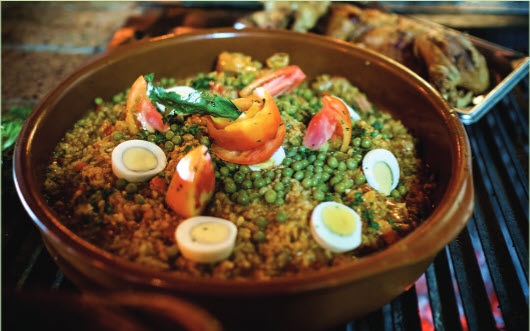
I’ve been eating arroz con pollo, the ubiquitous chicken and rice dish served at Cuban family gatherings, for as long as I can remember. And while I’ve had many delicious versions, chef Iván’s is undoubtedly the best I’ve tasted. I strongly suggest you do not neglect the last step, which instructs you to pour beer over the cooked dish. The beer mixes with the chicken juices and creates an incredibly tasty sauce.
Serves 4
- 2 cups chicken stock
- 1 chicken bouillon cube
- 4 skin-on, bone-in chicken thighs
- 4 skin-on, bone-in chicken legs,
- 1 tablespoon kosher salt, plus more
- to taste
- ½ cup olive oil
- 1 large onion, chopped
- 5 cloves garlic, minced
- 1 teaspoon ground cumin
- 1 bay leaf
- ¼ cup chopped green bell pepper
- ¼ cup chopped red bell pepper
- 1 large beefsteak tomato, cut in half
- crosswise, coarsely grated with a box
- grater
- 2 cups long-grain white rice
- 1 teaspoon saffron threads, soaked in
- 2 tablespoons water
- 1 cup frozen green peas, defrosted
- ⅓ cup Crystal beer, or other Pilsner-
- style beer
- 2 eggs, soft boiled, peeled and cut in
- half, for garnish
- 1 plum tomato, cut into quarters, for
- garnish
Place the chicken stock and bouillon cube in a saucepan over medium heat. Simmer until the bouillon cube is fully dissolved. Set the broth aside. Season the chicken pieces with the salt. Heat the olive oil in a wide sauté pan or cazuela (a terra-cotta cooking vessel) over medium heat. Add the chicken pieces and cook just until brown on both sides, about 5 minutes.
The chicken should not be cooked through. Remove the chicken to a plate and set aside. Add the onion to the pan and sauté it until it turns limp and translucent, 2–3 minutes. Stir in the garlic, cumin, and bay leaf and cook until fragrant, about 2 minutes more. Stir in the green and red peppers and the grated tomato and simmer for a couple minutes, then add the rice and saffron, along with its soaking water, to the pan.
Return the chicken pieces to the pan, making sure to nudge them into the rice. Pour the reserved chicken broth over the chicken and rice and bring to a simmer. Taste the broth and season with salt if necessary. Once the broth is simmering, reduce the heat to medium-low and cook, covered, for 20 minutes.
Sprinkle the peas over the chicken and cook for another 5 minutes. Right before serving, drizzle the beer evenly over the pan and garnish with the eggs and tomato wedges.
Ceviche de Ostion ~ Oyster Ceviche
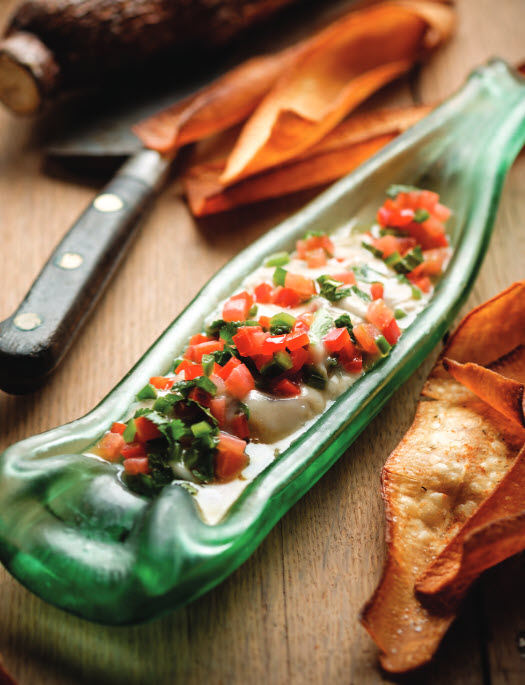
Oysters are incredibly rare in Cuba, as their stocks have been practically wiped out. However, on one particular day we saw a fisherman entering the paladar where we were seated with a bag of mangrove oysters. These Caribbean oysters grow in clumps on the roots of mangroves, the shrubs that grow in coastal seawater. Mangrove oysters are smaller, plumper, and less briny than the cold-water variety. When presented with this ingredient, the chef decided he’d prepare this oyster ceviche for us, and we loved it. Feel free to use your favorite oyster in this recipe.
Serves 6
- 1 cup extra virgin olive oil
- Juice of 2 limes
- Juice of 3 lemons
- 2 sprigs fresh mint, sliced into
- ribbons
- 2 sprigs fresh cilantro, chopped
- ½ small red bell pepper, seeded and
- finely chopped
- Kosher salt and freshly ground white
- pepper
- 30 oysters, shucked, liquid reserved
- 1 jalapeño pepper, seeded and finely
- chopped
- 1 tomato, peeled, seeded, and
- chopped
Yuca chips, for serving
From Piedmont Style
Pumpkin and Gorgonzola Cheese Risotto
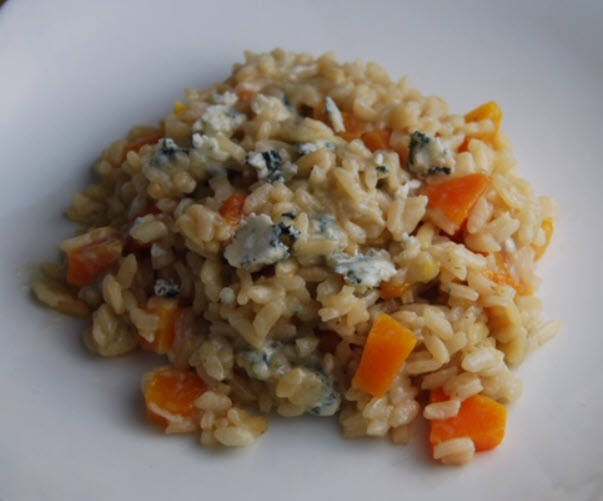
- 2 tablespoons olive oil
- 4 tablespoons butter
- 1 yellow onion, finely chopped
- 1 pound Arborio rice
- 1 cup white wine
- 2 cups fresh pumpkin, peeled and cut in small cubes
- 8 cups chicken stock, hot
- 2 cups sweet Gorgonzola cheese
- 2 cups Parmesan cheese, grated
- Salt and pepper to taste
Heat the oil together with two tablespoons of butter in a large flat skillet; add the onions and sauté until they become translucent; add the rice and toss for a few minutes to allow each grain to be coated by the oil and butter. Pour in the wine and reduce all the way; add the pumpkin, mixing well. Little by little add the hot broth and let it be absorbed before adding some more. Simmer for 15 to 20 minutes, mixing very frequently to avoid the rice sticking to the bottom of the pan. Season to your taste. When cooked, remove from the heat, add the Gorgonzola cheese, Parmesan cheese and the remaining two tablespoons of butter; mix well. Serve hot.
Jordan Wright
November 2017
King Solomon’s Table ~ The Sioux Chef’s Indigenous Kitchen ~ Rasika – Flavors of India ~ Virginia Barbecue ~ The Potlikker Papers ~ Appalachian Appetite ~ The Faerie Handbook ~ Moonshine ~ Middle-Earth: From Script to Screen
If there’s a theme to this year’s crop of food and spirits books, it’s ethnically-driven, historic and authentic – with a dollop of fantasy. Like travelogues, they offer an authentic glimpse into the past.
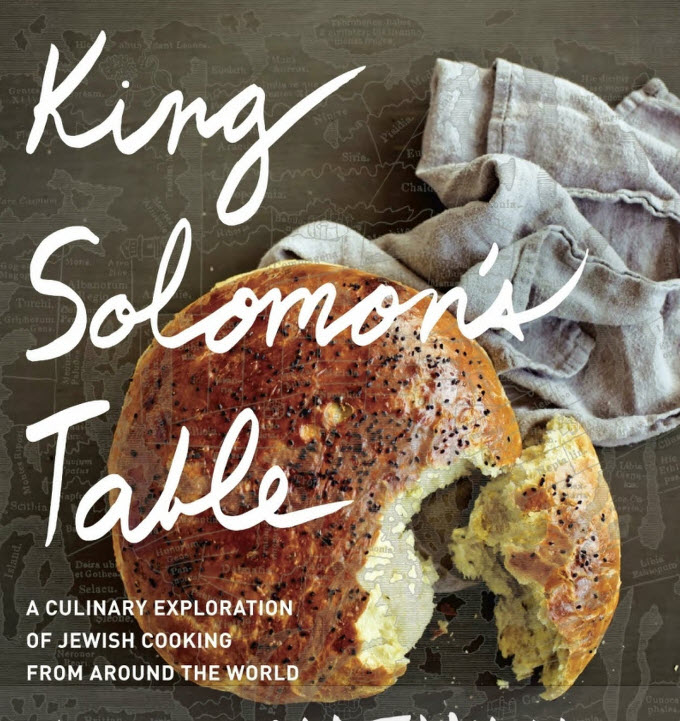
KING SOLOMON’S TABLE – A Culinary Exploration of Jewish Cooking from Around the World, Joan Nathan (Alfred A. Knopf 2018). This weighty and thoroughly comprehensive cookbook is Nathan’s most exciting to date. Edited by the late, much lauded Judith Jones with forward by Alice Waters, this compendium of forgotten recipes represents the many interpretations of the cuisine of the Jewish diaspora. As both historian and cook, Nathan, known as the grand dame of Jewish cookery, is relentless in her research. Through her extensive world travels into home kitchens and restaurants, she pries loose well-guarded, family recipes – many formulated with locally available ingredients. Her contextual and personal fore-stories to each recipe provide the kind of reading real cooks relish. www.aaknopf.com
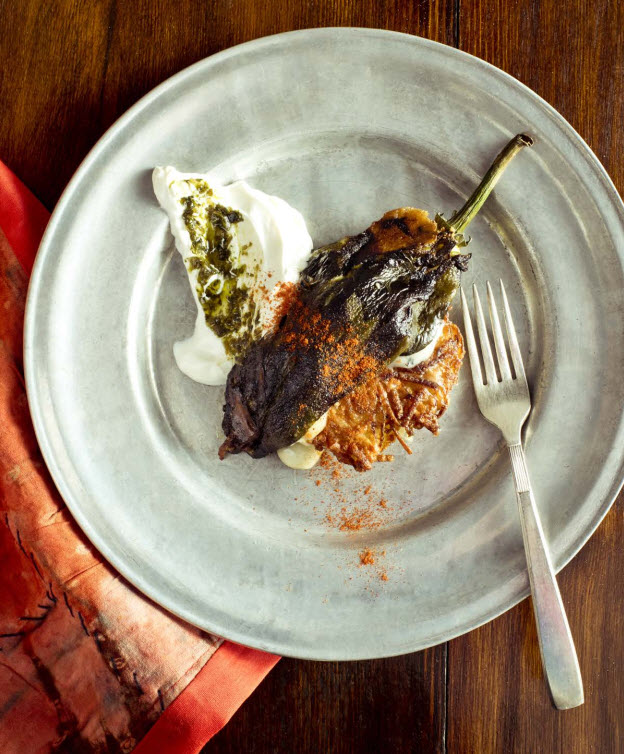
Green Chile Relleno Latkes
yield: 12 latkes
12 whole green chiles, such as Anaheim, Poblano, or Hatch
12 ounces (340 grams) white cheddar or Jack cheese, sliced width wise into 12 short pieces
2 pounds (1.11 kilos) russet or baking potatoes (about 3 large), peeled
1 medium onion, peeled
2 large eggs
B⁄d to V cup (30 to 55 grams)
panko or regular breadcrumbs or matzo meal
Salt and freshly ground pepper to taste
Vegetable or grape-seed oil for frying
1. Preheat the oven to 375 degrees and line a baking sheet with foil. Put the whole chiles on the baking sheet and roast for 40 minutes to an hour, flipping every 20 minutes, until the chiles are blackened all over. Let cool and then remove the stems and skin from each chili, leaving them as intact as possible. Then cut a slit almost the full length of each chili and carefully pull out the seeds. Put a piece of cheese inside each chili.
2. While the chiles are roasting, make the latkes, keeping the potatoes in cold water until ready to grate them.
3. Starting with the onions, alternately grate some of the onions in a food processor fitted with a steel blade or on the large holes of a large box grater and some of the potatoes on the smallest. (Doing it in this order will keep the
potato mixture from blackening.) When you have finished, put the potato and onion mixture into a clean dish towel and squeeze out the water into a medium bowl, allowing the potato starch to settle at the bottom. Carefully pour off the water, but leave the potato starch at the bottom of the bowl.
4. Once the liquid has been drained, put the potato mixture back in the bowl with the potato starch that has accumulated in the bottom. Add the egg, the breadcrumbs or matzo meal, and salt and pepper to taste and mix well.
5. Heat an inch of oil in a frying pan. Drop about 2 heaping tablespoons of mixture for each latke into the skillet and fry for a few minutes, turning
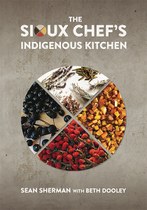
THE SIOUX CHEF’S INDIGENOUS KITCHEN – Sean Sherman with Beth Dooley (University of Minnesota Press 2017). Famed Oglala Dakota chef, Sean Sherman, brings his years of experience foraging game, fish and wild ingredients for authentic Native American fare to his first cookbook. I have been vicariously following Sherman’s nationwide nose-to-tail dinners on Facebook throughout the year, especially a six-course dinner at the James Beard House.
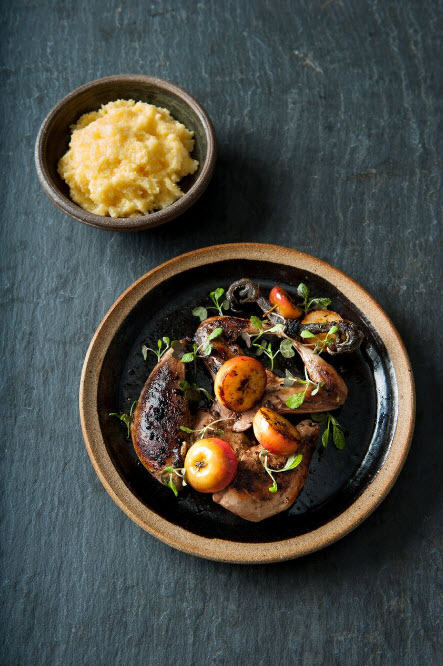
Maple–Juniper Roast Pheasant
Čhaŋháŋpi Tiktíča na Ȟaŋté úŋ Šiyóša Čheúŋpapi
Serves 4 to 6
When I was growing up on the Pine Ridge Reservation, we stocked our freezers with pheasant and grouse. We’d see them darting across the dirt roads into the dry brush. They were as common as the red-winged blackbirds perched on the fence posts.
Overnight dry brining seasons and helps this especially lean bird to become tender and succulent. The technique also works with grouse and guinea hens.
2 small pheasants
1 tablespoon coarse salt
2 tablespoons maple sugar
1 teaspoon sumac
1 teaspoon crushed juniper
¼ cup Rendered Duck Fat, page 105, or sunflower oil
1 cup fresh cranberries
½ cup Corn or Turkey Stock, page 170, or vegetable stock
3 tablespoons maple vinegar
2 griddled apple halves for garnish (optional)
The day before, rinse the pheasants and pat dry with paper towels. To dry-brine, generously season with the salt, maple sugar, sumac, and juniper. Place on a roasting pan or deep plate in the refrigerator, uncovered, overnight.
Preheat the oven to 500°F. Place the pheasants breast side up in a medium roasting pan. Rub a generous amount of the duck fat under the skin of the birds and over the outside of the skin. Put half the cranberries into the cavity of the pheasants and spread the rest in the pan. Pour the stock and vinegar into the roasting pan. Roast for 15 minutes. Reduce the heat to 350°F and baste the pheasants with the pan juices. Continue roasting until the skin is crisp, the juices run clear, and a meat thermometer inserted in the thigh reaches 155°F, about 30 to 45 more minutes. Allow to stand at least 10 minutes before carving.
Carve and drizzle with the pan juices before serving with the griddled apples.
Substitute 2 tablespoons cider vinegar and 1 tablespoon maple syrup for the maple vinegar.
For the griddled apples, slice the apples in half horizontally, brush with a little sunflower or walnut oil, and griddle cut side down in a hot skillet or frying pan until lightly browned, about 3 to 5 minutes.
Rendered Duck Fat
Carefully remove all the skin and fat from the duck breasts, cutting close to, but not touching, the meat. Once the fat and skin are removed, cut into 1-inch chunks. Place the skin, with its fat, into a heavy-bottomed skillet or Dutch oven. Set the pan over low heat and slowly cook, stirring occasionally, until the skin has crisped and its fat has changed to liquid, about 45 minutes. With a slotted spoon, remove the crisped skin (cracklings) and drain them in a bowl lined with paper towels. Allow the liquid fat to cool to room temperature, then strain through a fine-mesh sieve lined with cheesecloth into a bowl or a clean glass jar.
Corn Stock
Save the corncobs after you’ve enjoyed boiled or roasted corn on the cob or you’ve cut the kernels for use in a recipe. Put the corncobs into a pot and cover with water by about 1 inch. Bring to a boil and partially cover. Reduce the heat and simmer until the stock tastes “corny,” about 1 hour. Discard the cobs. Store the stock in a covered container in the refrigerator or freezer.
Fish, Game, Meat Stock
We make stock with just about everything in the larder, including vegetables (except greens) and bones (even smoked fish bones). Essential seasonings:
Juniper
Sage
Cedar
Mint
Juniper and cedar are aggressive flavors, so add seasoning with a light touch. You can always add more later on. Then add enough water to cover the ingredients completely and set over a low flame until the stock is flavorful. Cooking time will vary depending on the amount of liquid and the ingredients, but most stocks require cooking at least 2 to 3 hours.
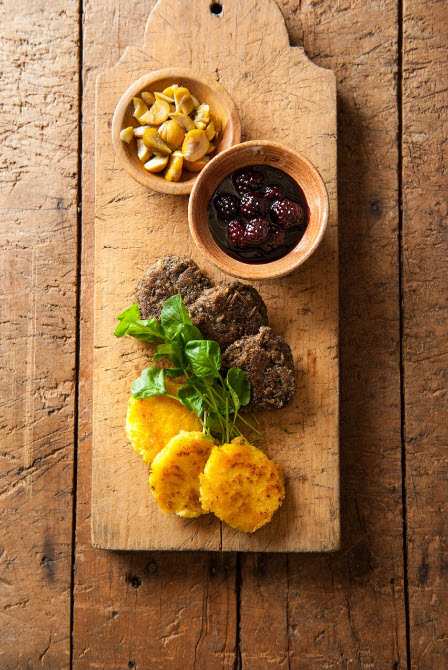
Wild Rice Cakes
Psíŋ Aǧúyapi Sáka na Hoǧáŋwičhašašni Ašótkaziyapi nakúŋ Waȟpé Skúya Yužápi
Makes about 4 to 6 cakes
These are our go-to cakes for breakfast, as a snack, and as the base for a well-seasoned bison braise or duck. They’re especially good topped with smoked fish and our bright lemony Sorrel Sauce, page 64. Make them tiny for an appetizer or big for dessert slathered in maple-berry sauce.
The recipe for these couldn’t be simpler. It’s just overcooked wild rice, pureed into a thick dough. We like to stir in a little cooked wild rice for texture. Once shaped, these will keep several days in the refrigerator, so feel free to make them ahead. Leftovers may be re-crisped in a low oven until warmed through.
2 cups cooked wild rice, page 81
About 3 cups water
Pinch salt
Generous pinch maple sugar
3 to 4 tablespoons sunflower oil or more as needed
Put 1½ cups cooked wild rice and water into a saucepan, reserving ½ cup. Place over high heat, bring to a boil, and reduce the heat to a simmer. Cook until the rice is very soft and the water has evaporated. Drain. In a food processor fitted with a steel blade, puree the rice into a sticky dough. Place the dough into a medium bowl and work in the salt, sugar, and the remaining cooked rice.
Scoop out a scant ¼ cup dough for each patty and shape to rounds about ½ inch thick. Heat the oil in a heavy skillet and brown the patties about 5 to 8 minutes per side until lightly browned. Transfer the patties to a baking sheet and place in a warm oven until ready to serve.
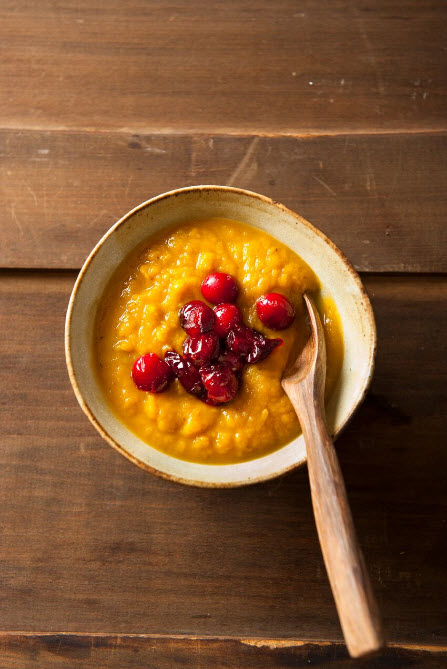
Squash and Apple Soup with Fresh Cranberry Sauce
Wagmú na Tȟaspáŋ Waháŋpi nakúŋ Watȟókeča T’áǧa Yužápi
Serves 4 to 6
This rich, flavorful soup has a creamy texture without cream. We use the small, tart crab apples that grow in backyards and along the borders of farm fields.
2 tablespoons sunflower oil
1 wild onion, chopped, or ¼ cup chopped shallot
2 pounds winter squash, seeded, peeled, and cut into 1-inch cubes
1 tart apple, cored and chopped
1 cup cider
3 cups Corn Stock, page 170, or vegetable stock
1 tablespoon maple syrup or more to taste
Salt to taste
Sumac to taste
Cranberry Sauce, page 108, or chopped fresh cranberries for garnish
Heat the oil in a deep, heavy saucepan over medium heat and sauté the onion, squash, and apple until the onion is translucent, about 5 minutes. Stir in the cider and stock, increase the heat, and bring to a boil. Reduce the heat and simmer until the squash is very tender, about 20 minutes. With an immersion blender or working in batches with a blender, puree the soup and return to the pot to warm. Season to taste with maple syrup, salt, and sumac. Serve with a dollop of Cranberry Sauce.
Recognition for his decades-long efforts as chef and educator has been given by National Public Radio, Guardian UK, Saveur and the New York Times. Sherman has just started a non-profit, NATIFS.org (or North American Traditional Indigenous Food Systems). In an email from last week, Sherman shared his exciting news. “We are actively fundraising, searching for an Executive Director, and looking for the building that will be an Indigenous Food Hub and the heart of the non-profit.
The building will house an indigenous restaurant under the non-profit that will be open to the public and used as a live training center to teach restaurant skills. The building will also have an education and research component called, The Indigenous Food Lab, which will offer classes and training on all parts of the indigenous food system curriculum we’ve been working on. We are expecting to find a building this year and begin building out as soon as possible.” In addition, he will open an indigenous focused restaurant in the new Waterworks Project in downtown Minneapolis along the river by the historic Stone Arch Bridge, the site of many spiritual and historic places for the Dakota people. www.upress.umn.edu
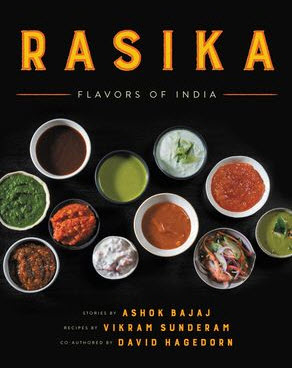
RASIKA – FLAVORS OF INDIA – Ashok Bajaj/Vikram Sunderam/David Hagedorn (Ecco 2017). The combination of mega-restaurateur Bajoj, James Beard Award-winning chef Sunderam and food writer and author David Hagedorn affords a back-of-the-house peek into a restaurant that has become a sensation. The book has tons of gorgeous photos and recipes for vegetarians (and vegans too) including one of the restaurant’s most popular dishes, Palak Chaat. The book methodically leads the reader into explanations and descriptions of exotic Indian spices, followed by a section of cocktails and ‘mocktails’ and a myriad of recipes, many from the restaurant’s signature dishes. A former chef and recipe writer for the Washington Post, co-author Hagedorn writes in a clear and detailed style to make these delicious recipes easy to accomplish. www.eccobooks.com
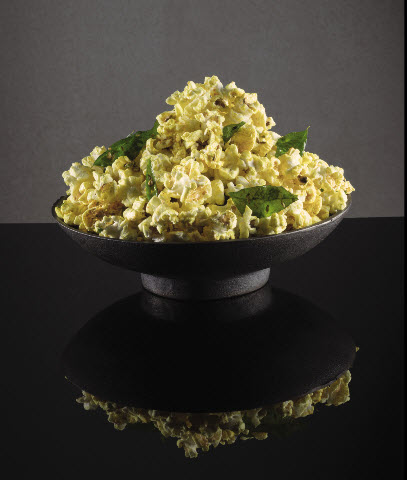
MASALA POPCORN
Vegan
Makes about 6 cups
This popcorn, which we offer with drinks in Rasika’s cocktail lounge, is a take on the indian snack chiwda, a sweet and savory mix often made with fried poha (puffed rice), dried fruit, nuts, spices, and herbs. There are many ways to make it and people add whatever they like—maybe corn flakes, coconut chips, chana dal. It’s a mainstay during Diwali, much like you’d have Chex Mix during the American holiday season.
If you don’t want to use the microwave popcorn, make it the old-fashioned way, following directions on the package of kerneles to make 6 cups of popcorn.
One 3.2 ounce back microwave popcorn
(Movie theater butter flavor or plain and salted), popped according to package directions)
2 tablespoons canola oil
1 teaspoon fennel seeds
1 teaspoon coriander seeds
1 teaspoon cumin seeds
1 teaspoon coarsely chopped fresh Thai green Chili
10 (1 ½ inch) fresh curry leaves (more if smaller), whole or cut crosswise into thin strips.
¼ teaspoon Kashmiri chili powder
¼ teaspoon ground turmeric
1/8 teaspoon asafetida
¼ teaspoon sugar
¼ teaspoon salt
Place the popcorn in a large bowl.
In a small saucepan, heat the oil over medium-high heat until it shimmers. Add the fennel seeds, coriander seeds, and cumin seeds and let them crackle. Stir in the green chili, curry leaves, Kashmiri chili powder, turmeric, and asafetida. Pour the mixture over the popcorn. Add the sugar and salt and stir or toss to coat evenly. (Keep tossing as you eat it to distribute the spice.)
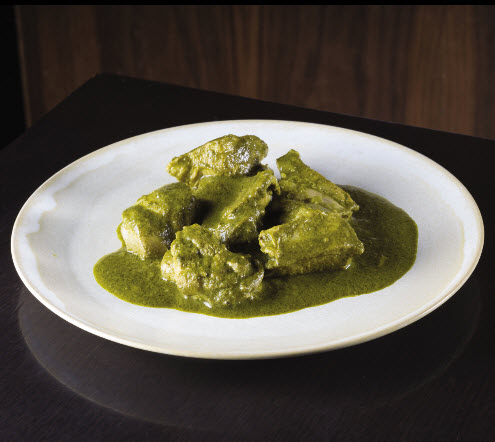
Chicken Green Masala
Serves 4
This is a riff on a Goan dish called chicken cafreal, which was brought to Western India by the Portuguese from their African colonies. (Cafreal is a Portuguese word meaning “in the African way.”) In the traditional recipe, chicken, whole or cut into bone-in pieces, is marinated in spicy green masala paste and then roasted. We decided to use the same ingredients and flavors, but to cut the chicken into bite- size, boneless pieces. This makes a much cleaner presentation and provides plenty of sauce for rice and bread. Despite its spiciness, or maybe because of it, Chicken Green Masala is one of the most popular dishes at Rasika.
Cooking the chicken uncovered rather than covered after the cilantro puree is added helps maintain its brightness.
For optimal flavor, make this dish many hours in advance, preferably the day before, and reheat it, although the sauce’s color will become darker.
Cilantro Puree
4 cups coarsely chopped cilantro, including stems
1 cup packed mint leaves
10 medium fresh Thai green chilies, coarsely chopped
½ teaspoon ground turmeric
½ cup fresh lemon juice
1 cup water
Chicken
1 tablespoon green cardamom pods
1 teaspoon whole cloves
2-inch cinnamon stick, curshed
2 tablespoons canola oil
1 cup finely chopped yellow onion
2 pounds boneless, skinless chicken (breast and/or thigh), cut into 1-inch cubes
½ teaspoon ground turmeric
1 ½ teaspoons salt
1 cup sunweetened coconut milk
Cucumber Raita (page 269), for serving
Plain Basmati Rice (page 217) and Naan (page 247), for serving
- MAKE THE CILANTRO PUREE: In a blender, combine the cilantro, mint, green chilies, garlic, turmeric, lemon juice, and water and blend on high speed to make a smooth puree. Run the blender for several minutes; the finer and smoother the puree, the better.
- MAKE THE CHICKEN: In a spice grinder, grind the cardamom pods, cloves, and cinnamon stick into a powder.
- In a heavy- bottomed pot or Dutch oven, heat the oil over medium- high heat until it shimmers. Sauté the onion, stirring frequently, until soft but not browned, about 3 minutes. Stir in the chicken, turmeric, and salt. Cover the pot and parcook the chicken for 5 minutes, stirring occasionally. Stir in the cilantro puree, coconut milk, and cardamom/clove/cinnamon powder and bring to a boil. Cook uncovered for 5 minutes, stirring occasionally, until the chicken is cooked through.
- Serve with cucumber raita, rice, and naan.
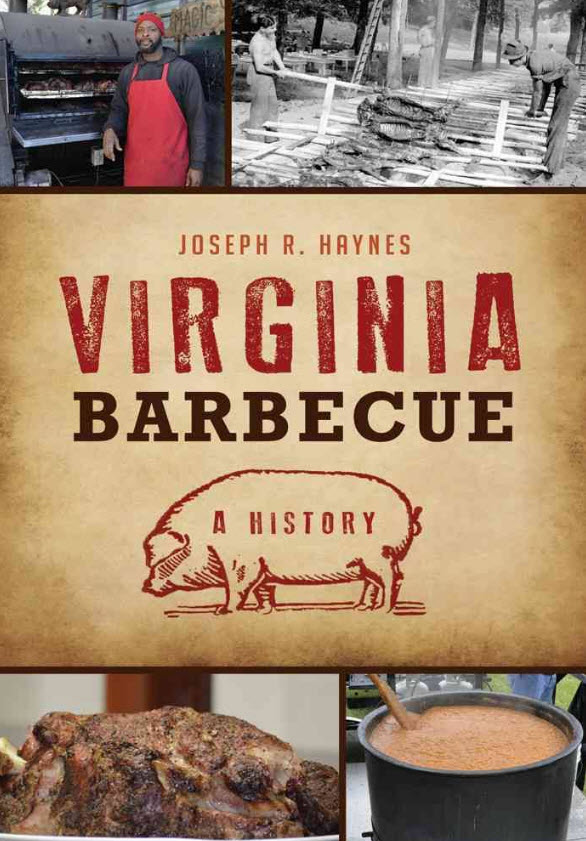
VIRGINIA BARBECUE – A HISTORY – Joseph R. Haynes (American Palate 2016). A member of the Patawomeck Indian tribe of Virginia, Haines is the consummate researcher you wish you had time to be. Combing through dusty archives and pouring over old recipe books, he proves that barbecue originated in Virginia with Native Americans. The book is rich with historic detail including old illustrations, archival photographs and posters advertising barbecue suppers. A must for backyard grillers looking for Virginia bragging rights. www.historypress.net
Wesley Jones, born enslaved in 1840, was a South Carolina barbecue cook. In 1937, at the age of ninety-seven, he shared his old southern barbecuing technique and recipe:
Night befo’ dem barbecues, I used to stay up all night a-cooking and basting de meats wid barbecue sass [sauce]. It made of vinegar, black and red pepper, salt, butter, a little sage, coriander, basil, onion, and garlic. Some folks drop a little sugar in it. On a long pronged stick I wraps a soft rag or cotton fer a swap, and all de night long I swabe dat meat ’till it drip into de fire. Dem drippings change de smoke into seasoned fumes dat smoke de meat. We turn de meat over and swab it dat way all night long ’till it ooze seasoning and bake all through.
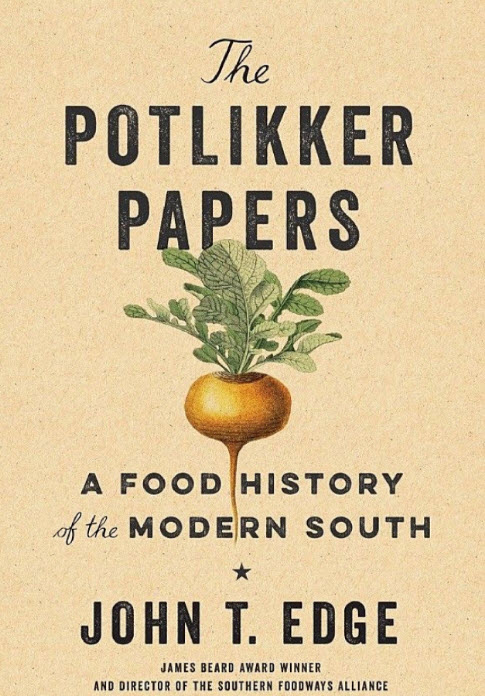
THE POTLIKKER PAPERS – A FOOD HISTORY OF THE MODERN SOUTH – John T. Edge (Penguin Press 2017). It’s not a simple matter to tie up the history and culture of food in the South, but Edge keeps us riveted throughout. As director of the Southern Foodways Alliance and James Beard Award-winner, Edge understands the politics and prose of Southern cooking. “‘Potlikker’ was an early euphemism for the polyglot of racial politics that is the South,” he explains. He gives props to the early pioneers of modern Southern cooking and tells tales from Fanny Hamer to Kentucky Fried Chicken founder Harland Sanders and Paul Prudhomme. A regular contributor to Garden & Gun magazine and winner of the James Beard Foundation’s M. F. K. Fisher Distinguished Writing Award, Edge proves that Southern cooking is what makes America great! www.thepenguinpress.com
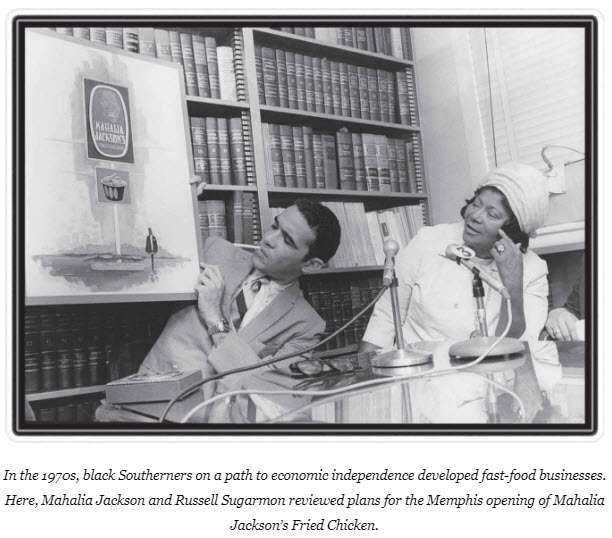

APPALACHIAN APPETITE – RECIPES FROM THE HEART OF AMERICA – Susi Gott Séguret (Hatherleigh Press 2016). Séguret’s French culinary school education informs her love for the wild and foraged ingredients from the hills of Appalachia and Madison County. In this heartwarming love story of all things Appalachian, she shares recipes from well-known Southern chefs and old-time song lyrics from her deep love of the region she calls home. www.hatherleighpress.com
Tiller’s Molassie Cake
Katie Hoffman, Historian
Ingredients:
2½ cups all-purpose flour
1½ teaspoons baking soda
1 teaspoon salt
1 teaspoon cinnamon
1 teaspoon cloves
½ teaspoon powdered ginger
For the Sorghum Mixture
1 cup “molassie” (sweet sorghum syrup)
½ cup melted butter (the original recipe calls for Crisco)
½ cup sugar
2 eggs
Preparation:
Preheat oven to 375°F and grease and flour a 9×13-inch pan. In a large bowl, whisk together the dry ingredients. Add the sorghum mixture and stir. Then, at the last minute, stir in 1 cup boiling water. The batter will be very thin. Pour it into the greased and floured cake pan. Bake for about 30 minutes. Use a cake tester to determine doneness. Do not overbake. (Or if you do, make the butterscotch sauce and no one will ever know!)
For the Butterscotch Sauce
Ingredients:
1½ cups brown sugar
2/3 cup corn syrup
4 tablespoons butter
¾ cup evaporated milk
Preparation:
Bring sugar, syrup, and butter to a boil, then let cool. Add the milk slowly, stirring constantly. Pour evenly over the top of the warm cake. Much of the sauce will sink in, but you will get a beautiful shiny glaze over the top.

THE FAERIE HANDBOOK – AN ENCHANTING COMPENDIUM OF LITERATURE, LORE, ART, RECIPES AND PROJECTS – (from the Editors of Faerie Magazine 2017). Faerie lore is not something that was on my radar until this lovely book landed on my desk. Written by editor-in-chief Carolyn Turgeon and the editors of Faerie Magazine, one of Barnes & Noble’s top-selling lifestyle magazines. Who knew? They have a readership of 28,000. This lovely lavender linen-wrapped book traces the history of fairies from literature to pop culture. Featuring a well-curated array of vintage and contemporary fine art and photography, fashion pieces, essays, do-it-yourself projects and holiday recipes. www.harperdesignbooks.com
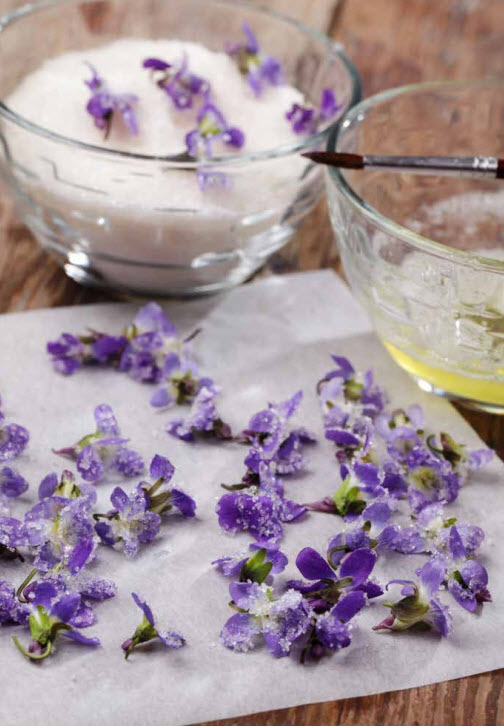
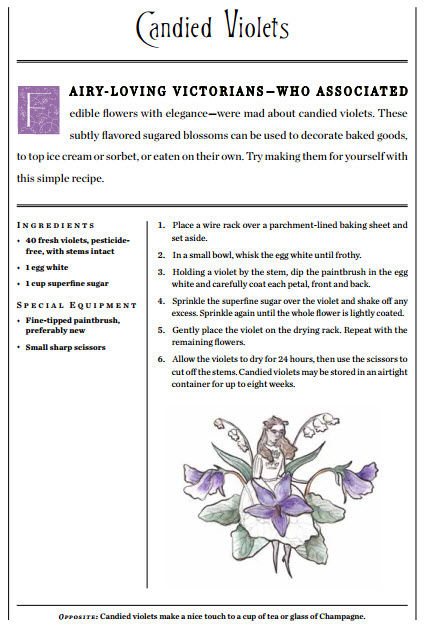
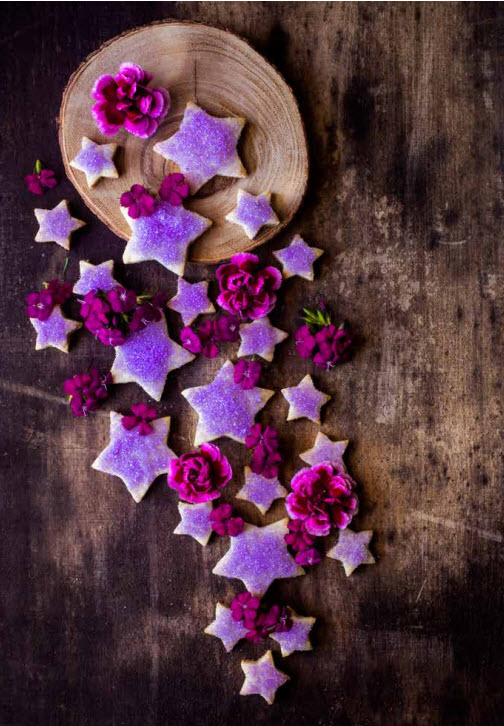
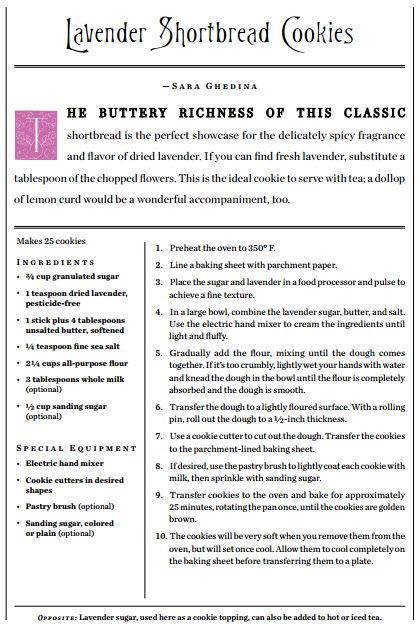
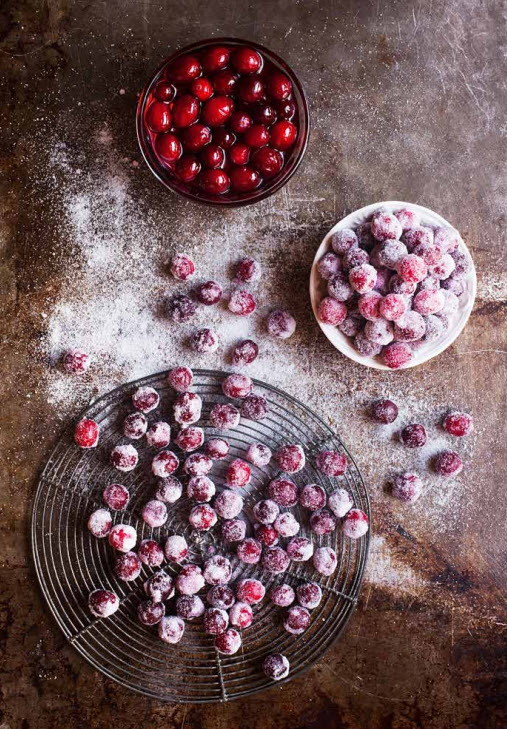
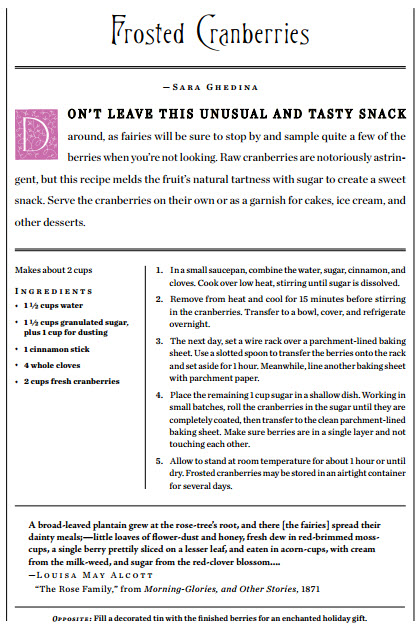
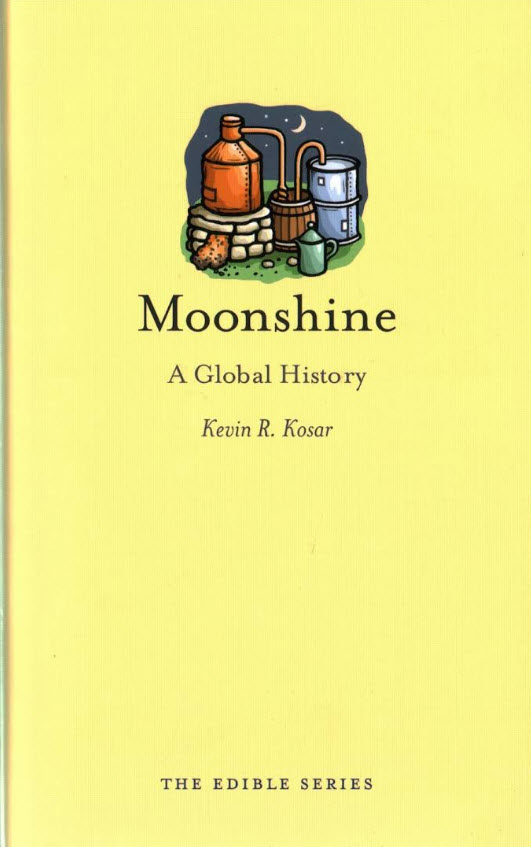
MOONSHINE – A GLOBAL HISTORY – Kevin Kosar (The Edible Series, Reaktion Books, UK 2017). A Washington, DC alcohol policy wonk, Kosar counts this as his second book on the topic of spirits. His first foray into writing about his favorite topic was Whiskey. Illustrated with photographs of early American backwoods stills, caricatures of moonshiners and illegal booze busts, Kosar proves that moonshine is a global phenomenon begun by ancient civilizations. Here we learn of the rum runners, gangsters, mountaineer moonshiners and Prohibitionists who peppered the industry when it was illegal and untaxable. A fun read with cocktail recipes for the uninitiated, Kosar writes, “Many recipes were developed in the U. S. during Prohibition to mask the taste of poorly made moonshine.” Thankfully we’ve come a long way from those days. www.reaktionbooks.co.uk

MIDDLE-EARTH: FROM SCRIPT TO SCREEN – Building the World of the Lord of the Rings and The Hobbit – Daniel Falconer (Harper Collins 2017). For the fantasy-minded, this massive 512-page book is an ode to the original set of “friendly folk”, Peter Jackson’s crack, creative team and art directors, who conceptualized the impossible bringing J. R. R. Tolkien’s magical trilogies to the big screen. It’s the consummate compendium for those eager to glimpse behind the scenes and learn the secrets behind the cinematic making of Middle Earth – its innovative visual and special effects that lead to its garnering 17 Academy Awards. Insider glimpses into set decoration, costume design, locations and character development, include hundreds of photos and concept illustrations from the closed set. Ring Trilogy geeks will learn how sets were built brick by brick and digitally pixel by pixel, including how multiple shooting units functioned. www.harperdesignbooks.com
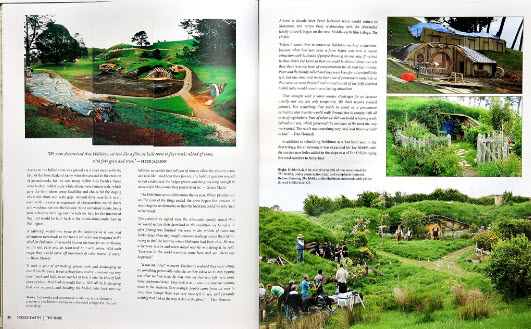
Jordan Wright
April 4, 2015
Special to DC Metro Theater Arts
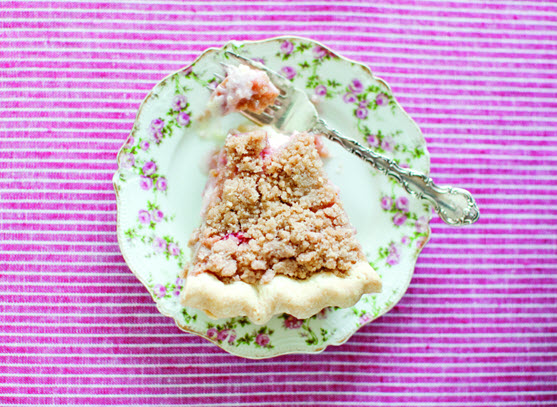 Sour Cream Rhubarb Pie from Butter Baked Goods As the owner of the pink-and-pistachio colored bespoke bakery Butter Baked Goods in Vancouver, Canada, Rosie Daykin is realizing her dream. After ditching a successful career as an interior designer, Rosie returned to her lifelong passion turning her pretty cabbage rose-wallpapered bakery café into a worldwide business enterprise. In her first cookbook, Butter Baked Goods – Nostalgic Recipes from a Neighborhood Bakery (Alfred A. Knopf 2015), Rosie shares secrets of some of her most irresistible delicacies dividing chapters into breakfast indulgences, pies, classic cakes, muffins, cookies, bars, brownies and cupcakes. There are recipes for butter creams and frostings, and even her coveted recipe for Butter’s famous gourmet marshmallows found at over 300 retailers across North America.
What I loved about this book is Janis Nicolay’s soft focus photographs of dozens of Rosie’s simple homemade desserts like Sticks and Stones Cookies, Chocolate Nutella High-Top Cupcakes, Bumbleberry Pie and Butterscotch Maple Pecan Scones.
Just in time for spring, we’ve giving you her recipe for Sour Cream Rhubarb Pie. Happy baking!
As Rosie describes it, “This recipe came to me from my dear friend Margie. We became fast friends the day our family moved onto the block. You couldn’t ask for a better neighbor, and when I found out she was a keen baker I knew she was one for keeps! I think this may be my all-time favorite pie. The combination of sour cream, rhubarb and crumb topping is so good, it should be illegal.”
SOUR CREAM RHUBARB PIE
- Preheat the oven to 400°F.
- In a large bowl, combine the sugar, flour and salt. In a separate bowl, whisk together the eggs, sour cream and vanilla, then add to the flour mixture.
- Place the rhubarb in the prepared pie shell. Pour the egg and flour mixture evenly over the top.
- Bake in the preheated oven for 10 minutes. Lower the oven temperature to 350°F and bake for 30 minutes more.
- Meanwhile, in a small bowl, combine the ingredients for the crumb topping and mix with a fork until crumbly.
- Remove the pie from the oven and sprinkle the crumb topping over the top. Return to the oven to bake for another 15 minutes or until the topping is lightly browned.
- Remove from the oven again and allow the pie to cool slightly before slicing.
Ingredients
- 1 Butter’s All Butter Pastry single crust pie (page 192)
- 1 1⁄4 cups sugar
- 3 tablespoons all-purpose flour
- 1⁄2 teaspoon salt
- 2 large eggs
- 1 cup sour cream
- 1 teaspoon pure vanilla
- 3 cups rhubarb (fresh or frozen), cut into 1⁄2-inch pieces
Crumb Topping
- 1⁄3 cup sugar
- 1⁄3 cup all-purpose flour
- 1⁄4 teaspoon salt
- 1 teaspoon cinnamon
- 1⁄4 cup butter, softened
MAKES: 1 pie, about 8 to 10 slices
YOU WILL NEED: (9-inch) pie dish
“Margie has frozen this baked pie. She tells me that once it is defrosted and warmed slightly in a 200°F oven, you would never know it had ever been frozen.”
Jordan Wright
August 3, 2014
Special to DC Metro Theater Arts

One of the most beautiful and evocative cookbooks to cross my path of late is the recent issue 7,000 Islands – A Food Portrait of the Philippines by Australian-Filipino food and travel writer Yasmin Newman. A lavishly photographed and comprehensive collection of recipes from around the islands of Southeast Asia, it is especially relevant as we see more and more restaurants opening that feature Asian cuisine. In it Newman takes us to exotic locales to offer up dishes that can be prepared in our own kitchens. Of all the 323 pages of recipes I chose this one, which is a unique way of preparing our Maryland Blue Crabs.
 Ginataang alimasag at buko
Crab and young coconut ginataan Crab and young coconut ginataan One of the most resounding memories I have of the Philippines is of regularly eating crab; the expensive crustacean is a rare treat in Australia. My cousins occasionally enjoy it for breakfast when an affordable batch of live crabs arrives home from the morning market or is received as a gift. The bright orange shells splash colour across the table and we prise the sweet crabmeat from within. Dinner or dinner-party dish, it depends on the price of crab near you. Either way, it’s special. It’s also incredibly quick to prepare. If you prefer, ask your fishmonger to clean the crab for you.
Serves: 4
- 4 raw blue swimmer crabs (about 1 kg / 2 lb 3 oz)
- 80 ml (2 ½ fl oz / 1/3 cup) vegetable oil
- 10 cm (4 inch) piece ginger, peeled and very finely chopped
- 1 small onion, chopped
- 1 small vine-ripened tomato, roughly chopped
- 3 lemongrass stems, white part only, bruised
- 2 long green chiles, halved lengthwise and seeded
- 250 ml (8 ½ fl oz / 1 cup) vegetable stock
- 250 ml (8 ½ fl oz / 1 cup) coconut milk
- 250 ml (9 fl oz / 1 cup) coconut cream
- 2 young cocounts (buko), opened and meat scraped (see method, page 326)
- Steamed rice, to serve
To prepare each crab, lift the triangular tail flap on the underside of the body and gently but firmly pull down to release the top shell. Remove and discard the flap, reserving the top shell. Remove and discard the spongy, finger-like gills, then replace the shell. Cut the body in half. Using a nutcracker or the blunt edge of a large knife, crack the large claws.
Heat the vegetable oil in a large, deep saucepan over medium heat. Add the ginger and cook for 1 minute, stirring until fragrant. Add the onion and cook for 2 minutes, then add the tomato and cook for a further 3 minutes, stirring and pressing until the tomato starts to break down.
Add the lemongrass, chillies, stock and coconut milk to the pan, season with freshley cracked black pepper, then bring to a simmer over medium-high heat. Add the crab, reduce the heat oto medium, and continue to cook for a further 8-10 minutes, turning over the crab pieces halfway – the crab is cooked when the shell changes colour and the meat turns white. Using tongs, remove the crab pieces to a serving bowl.
Add the coconut cream and young coconut meat to the pan, increase the heat to medium-high , and cook for 1-2 minutes, stirring often, until slightly thickened. Remove from the heat, discard the lemongrass and chillies, if desires, and pour over the crab. Serve with steamed rice.
Jordan Wright
May 20, 2014
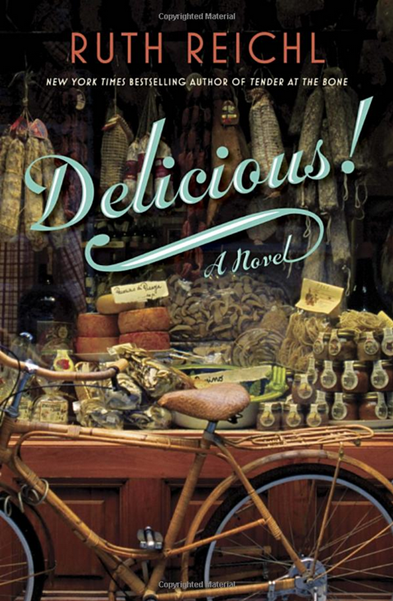
Delicious! A First Novel from Ruth Reichl
When seasoned food writer and four-time James Beard Award-winner Ruth Reichl debuts her first novel (two more are planned), foodies everywhere sit up and take notice. The former restaurant critic, first at the LA Times – – later a six-year stint at the New York Times, is better known for bestselling memoirs like Comfort Me with Apples, Tender at the Bone and Garlic and Sapphires, books that seamlessly blended essays with recipes. In Delicious! (Random House 2014) she proves she can cook up a tale as eloquently as penning a review.
Reichl’s keen insight and food knowledge lend authenticity to a storyabout an aspiring young writer who leaves her family for an entry-level job at a bespoke food magazine that soon after goes belly up. Though she claims her characters evolved on their own, “Over time, all the characters claimed their own territories, refusing to do the things I wanted them to do, taking on their own strong voices”, Reichl’s ten years as Editor-in-Chief of the much beloved, and sorely missed, Gourmet magazine, inform their motivations through every twist and turn. Oh, the parallels!
This light-hearted mystery will intrigue the reader with its ethno-botanical references, intriguing anagrams and culinary clues. Did you know that NYU’s Fales Library had eclipsed Radcliffe’s as America’s largest collection of antique cookbooks? Just one of the little known facts where Reichl reveals her insider’s savvy on epicurean esoterica.
The story is filled with the adventures Billie Breslin and her discovery of a trove of wartime letters between the mysterious Lulu and James Beard. Yes! Reichl has channeled the august James Beard who offers his kindness and wisdom to the budding journalist. Other colorful characters are drawn from Reichl’s vast experience with food emporia and her years in the New York publishing world. When Breslin takes a weekend job at a Greenwich Village cheese shop, you’ll swear you’re on Bleeker Street buying mozzarella di bufala at Murray’s Cheese.
Reichl will be speaking and signing Delicious! at DC’s Politics and Prose on May 29th.
Spring Things
Getting a fresh start on the season once meant foraging for whatever wild edibles popped out of the ground. That means spring sprouters like ramps, violets, redbud flowers, tulip petals (not wild but certainly edible especially when stuffed with herbed goat cheese), mint, the tender shoots of the greenbriar, young dandelion leaves and the lovely morels and chanterelles found in leaf-strewn woods. If you live near a stream, or even a roadside culvert, chances are you’ve already found watercress for your salads and tossing in a few shards of shaved Parmigiano-Reggiano to finish it off.
If you are city-bound and need a jumpstart to your diet, or just want to amp up your workout performance, pick up one of these cookbooks.

Can a Vegan Be a High Performance Athlete?
Canadian Brendan Brazier’s fourth in his series of health-minded books, the Thrive Energy Cookbook (Perseus Books 2014) is perfect for those in high performance training who may be on a plant-based diet or even for those looking for meatless options. As a former Ironman competitor and two-time Canadian Ultra-Marathon Champion, this high-intensity athlete doesn’t sacrifice taste to get the results he wants. As Head of Nutrition for the Garmin-Sharp Pro Cycling Team and creator of Vega, a fantastic award-winning line of whole food nutritional products, he’s expected to please picky athletes. Celeb clients Hugh Jackman, MLB All Star Brian Roberts, and Olympic Gold Medal triathlete Simon Whitfield, follow this regime for optimum performance.
The book has 150 plant-based recipes, a pantry list of must haves, and tons of colorful photos. Okay, what fruit or veggie isn’t colorful? Brazier leaves out yeast, wheat, meat, dairy and refined sugars, but doesn’t neglect desserts, smoothies or power-packed veggie shots. This was one of the hardest books to choose a recipe from, since they are all quite original and delicious. But here’s one that should make your summer a whole lot cooler.
Super-Fruit Sangria from Brendan Brazier’s Thrive Energy Cookbook
Serves 1 – Makes 2 ¼ cups (550 mL) – Gluten Free, Super Nutrient-Dense – Prep Time: 5 minutes – Special Equipment: high-speed blender
- 4 or 5 fresh or frozen strawberries
- 10 fresh or frozen raspberries
- ½ cup (125 mL) fresh or frozen blueberries
- 1/3 cup (75 mL) chopped pineapple
- 2 fresh mint leaves
- Zest of ½ orange
- Zest of ½ lemon
- Zest of ½ lime
- 2 tbsp (30 mL) freshly squeezed orange juice
- 2 tbsp (30 mL) freshly squeezed lemon juice
- 2 tbsp (30 mL) freshly squeezed lime juice
- 2 tbsp (30 mL) pomegranate juice
- 2 tbsp (30 mL) acai berry juice
- 6 tbsp (90 mL) coconut water
- 2 tbsp (30 mL) agave nectar or maple syrup
- 1 tbsp (15 mL) pure vanilla extract
- About 2 cups (500 mL) ice cubes
In a blender, combine all the ingredients except the ice. Add ice to about 1 inch (2.5 cm) above the liquid line. Blend on high speed until smooth and creamy. If using frozen fruit, use less ice.
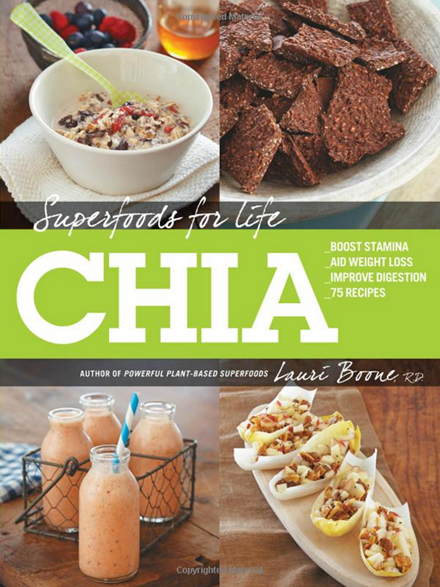
Cha-Cha-Chia: Not Just for Growing Green Hair on Clay Critters
Superfoods for Life, Chia by Lauri Boone (Fair Winds Press 2014) is a 75-recipe book jam-packed with doable ideas for using chia seeds in your daily diet. High in fiber, protein, minerals and essential fatty acids (They’re the good kind!), this tiny seed is cropping up everywhere these days – – in kombucha drinks, crackers, cereal and baked goods. And it’s no wonder. Known as an inflammation fighter and natural source of potent omega-3 fatty acids along with other nutrients, chia seeds can boost stamina, aid in weight loss and improve digestion. Le Pain Quotidian serves it up in puddings and Boone offers a few tasty options for making yours at home including a no-cook one for chocolate lovers.
Boone gets her street cred as a Registered Dietician, raw food instructor and writer for One Green Planet, Self and Oxygen Magazine. She has appeared on CNN, BBC Radio and NPR and blogs regularly about a holistic approach to health and wellness. And we’re all paying more attention to that!
Here’s an easy recipe from Boone’s cookbook.
Lemon, Coconut & Chocolate Chia Bark
This is an incredibly simple and decadent sweet treat combining smooth and creamy dark chocolate with crunchy chia seeds, dried coconut, and lemon zest. I like to use dark chocolate chips, which have a higher percentage of heart-healthy cacao than other varieties, but feel free to use your favorite chip, including nondairy chocolate chips or carob chips.
- 1 bag (9 ounces, or 255 g) dark chocolate chips
- 1⁄2 cup (43 g) shredded dried coconut
- 1⁄4 cup (50 g) chia seeds
- 1 tablespoon (6 g) lemon zest
- Pinch of sea salt
- Melt the chocolate chips in a small saucepan over medium heat, stirring occasionally, until smooth and creamy.
- Remove from the heat and stir in the dried coconut, chia seeds, and lemon zest.
- Spread the thick mixture into an even layer on a baking sheet lined with waxed paper. Freeze until hard, about 30 minutes.
- Break into bite-size chunks. Store in an airtight container.
- Yield: About 24 pieces
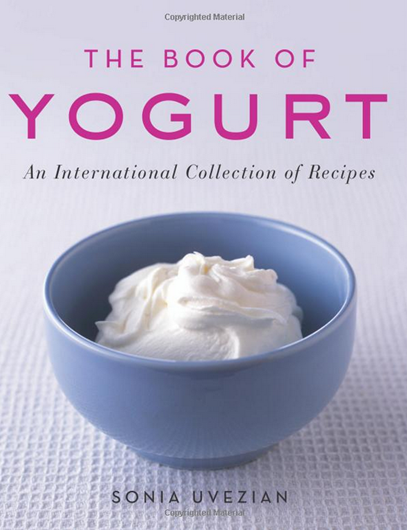
Probiotics Rule
It may seem that an entire book on yogurt may be overkill. But I assure you it is not. Sonia Uvezian knowledge of the tasty dairy product originates with her upbringing in Armenia and Lebanon, both of which incorporate yogurt in their daily diet.
In The Book of Yogurt – An International Collection of Recipes (HarperCollins) she has compiled both old and new recipes using yogurt. I especially like her Chilled Cherry Soup for summer and Ghivetch, a Rumanian veggie casserole that uses 12 vegetables plus grapes and greengage plums. Though the book has been out for a while, I thought it would add to the health-consciousness of this scribble.
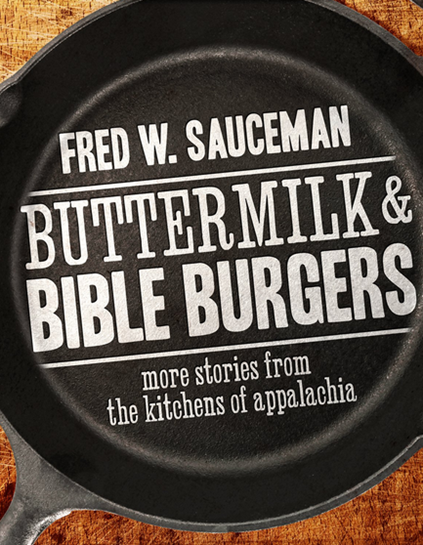
Off the Beaten Track with Fred Sauceman
Fred Sauceman’s Buttermilk and Bible Burgers: More Stories from the Kitchens of Appalachia (Mercer University Press 2014) is the latest for author, NPR radio broadcaster and college professor whose celebration of the American South is legendary. I’ve already seen most of his documentaries, “Red Hot Dog Digest”, “Mountain Mojo: A Cuban Pig Roast in East Tennessee”, “Beans All the Way: A Story of Pintos and Persistence”, “Smoke in the Holler: The Saucy Story of Ridgewood Barbecue” and “Ramps & Ruritans: Tales of the Revered and Reeking Leek of Flag Pond, Tennessee”. The titles say it all.
The 57-year-old’s love for the rural, most especially the backwoods and backstory of Appalachian foodways, is infectious – like riding down a dusty road in the cab of an old pickup listening to a country boy spin stories. Just hearing him honor the food culture and traditions of South is as satisfying as seeing a curl of smoke rise up off a rack of ribs at a roadhouse.
A native of Greenville, Tennessee, Sauceman is Senior Writer and Associate professor of Appalachian Studies at East Tennessee State University. He’s also known for his radio appearances on “Inside Appalachia”, a radio program produced on West Virginia Public Broadcasting, daily newscasts on WETS-FM/HD and “Food With Fred” which appears monthly on WJHL-TV, the CBS affiliate in Johnson City, TN. He is also a regular contributor to the Southern Food and Beverage Museum of New Orleans where he writes for the museum’s magazine Okra. His three-volume book series entitled “The Place Setting” Timeless Tastes of the Mountain South, From Bright Hope to Frog Level”, was also published by Mercer Press.
Recently I interviewed Sauceman by phone in anticipation of the release of his latest book.
Whisk and Quill – How many years have you been teaching and chronicling the food ways of Tennessee, Virginia, North Carolina and Kentucky?
Fred Sauceman – I’ve been writing about food-related topics since the mid-1990s and taught American Literature courses in the past. In 2005 I began offering a first-of-its-kind course entitled “The Foodways of Appalachia”, which has become the most popular course in Appalachian Studies at ETSU.
W&Q – What are your other writing outlets?
Sauceman – There are a number of publications I write for, among them the Johnson City Press where I have a monthly food column, “Potluck”, as well as the “Flavors” page for Blue Ridge Country Magazine.
W&Q – What is your connection to the Southern Foodways Alliance?
Sauceman – In 2010 edited the organization’s book “Cornbread Nation 5: The Best of Southern Food Writing”, and created the book Home and Away: A University Brings Food to the Table” in 2000. In 2010 I was one of the authors of “The Southern Foodways Alliance Community Cookbook”.
W&Q – How many years have you been in radio?
Sauceman – I started in radio when I was 15 with a rock and roll program on Saturday and Sunday nights. Later I became a country music DJ while working on my degrees. I also worked in television news with the ABC affiliate in Kingsport, TN.
W&Q – How can people order your DVDs?
Sauceman – Through the university at www.ETSUstore.com.
W&Q – What’s your favorite BBQ joint?
Sauceman – The Ridgewood Barbecue in Bluff City, Tennessee.

Easy Peasy Cooking for Diabetics
Robyn Webb’s The Smart Shopper Diabetes Cookbook offers real time strategies for making stress-free meals. Designed with the harried home chef in mind, the book sources ingredients from the deli counter, freezer, salad bar and supermarket shelves to put a healthy meal on the table in no time flat. It comes with the stamp of approval from the American Diabetes Association.
As an author, nutritionist and Food Editor of Diabetes Forecast, Robyn already has fifteen cookbooks under her belt and is a two-time award winning author of The Diabetes Comfort Food Cookbook. She has also appeared on Martha Stewart Radio, Food Network, Discovery Channel, CNN, ABC, CBS, ESPN and more, and as a local food writer her work has been highlighted in the Washington Post along with a ton of national magazines.
A resident of the DC Metro area, she conducts cooking classes, speaks to groups on nutrition, and even caters special events keeping in mind those with diabetes, pre-diabetes and heart conditions.
Here’s a recipe for the perfect cold summer side dish. Or serve it hot with melted goat cheese on top. I might try it as a main course with a fresh green salad and a bowl of Robyn’s Ginger Honeydew Soup to start.
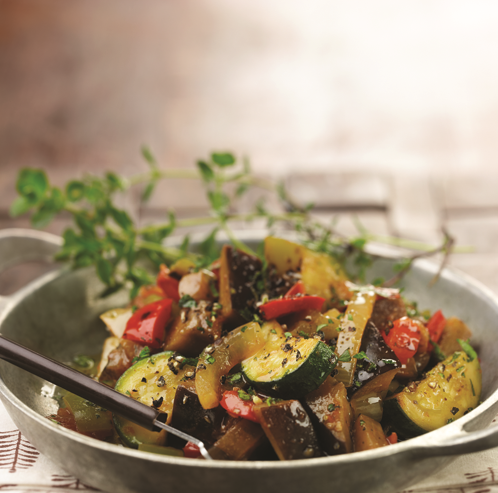 Ratatouille recipe 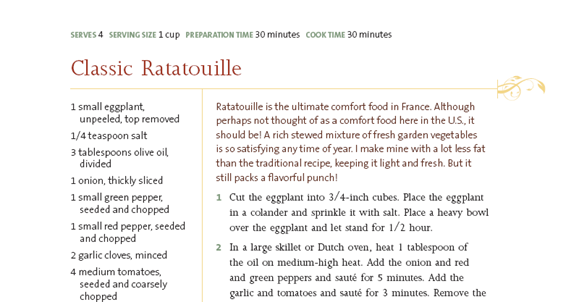 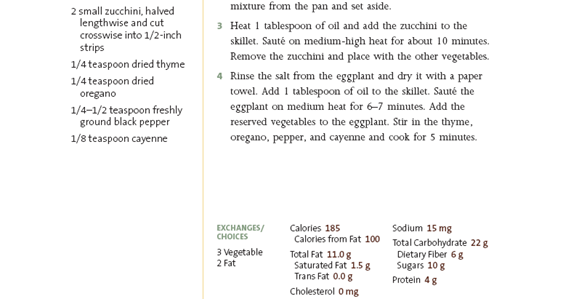
Jordan Wright
December 16, 2013
Dozens of fascinating and inspiring cookbooks have landed on our desks this year. Some from new writers, others from established authors, all eager to bring you into their kitchens and bars to tantalize you with recipes both retro and re-imagined. I’ve tried to pick out a few that are not on everyone’s radar. Here are a few that caught my eye…and my palate.
In Great Pub Food: Make Home Your New Local by Rachel Lane (Hardie Grant, London, 2013) the title says it all. In this nifty book Lane brings over 80 recipes of old school pub fare like Tandoori Chicken Burgers, Beef and Guinness Pie, Cornish Pasties and Rabbit Cacciatore into the home kitchen. Her desserts are comfort food for Brits and the Anglophiles amongst us. Two of my favorites are Eton Mess, a dessert that piles on heaps of heavy cream and strawberries, and Chocolate Stout Pudding that uses as an ingredient the creamy head from a glass of stout. Cozy up to this book before the first snow falls.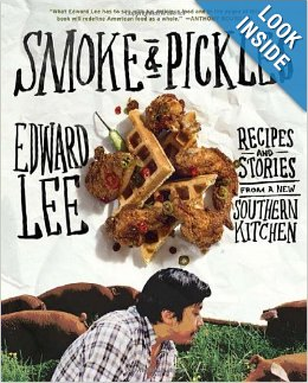
Edward Lee is a celebrated Korean chef who has been in Kentucky long enough to reinvent Southern cuisine. In Smoke & Pickles – Recipes and Stories from a New Southern Kitchen (Artisan Books, 2013) he has brought his Korean cooking techniques to bear on classic down-home cooking.
A three-time James Beard Foundation Award finalist for Best Chef: Southeast he has been perfecting his recipes at 610 Magnolia and MilkWood, his two successful restaurants in Louisville, Kentucky, a city he has called home for the past ten years. In this book he teaches you many of his tricks of the trade – – like how to make your own smoker on the cheap, and how to cure lamb for bacon. To warm the cockles of your heart, you’ll want to try his Asian-style ribs with kimchee and his Braised Brisket with Bourbon-Peach Glaze. While the Whiskey-Ginger Cake with Pear Salad is in the oven, you could be making his Pickled Chai Grapes. Stories of his Korean-American life in Brooklyn, New York add interest to the more than eighty recipes. According to Lee, “I am hoping to capture the inspirational journey of my life and cooking, even as I struggle to remember last night’s cooking.”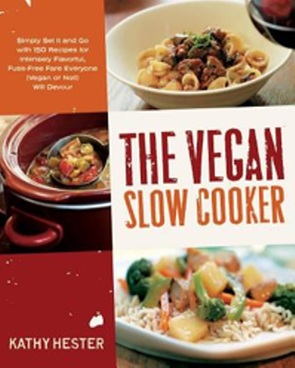
Vegans will want to get in on Vegan Slow Cooking by Kathy Hester (Fair Winds Press 2013). With over 100 recipes geared to a smaller-sized 1.5- to 2-quart slow cooker (crockpot) it’s a fantastic way to have something hot and hearty waiting for you at the end of a long day. I’m eager to try the Root Veggie Barley Risotto, Green Beans in Black Bean Sauce with Tofu, or the Bananas Foster for Breakfast – – a dish that cooks overnight. Perfect for Sunday brunch in bed!
There are delicious-sounding soups like White Bean Barley Soup and Creamy Celery Root Soup. There’s even a fondue made with almonds and Great Northern beans. Hester includes recipes for Cashew Cream, a great substitute for soy-free sour cream, and a budget-friendly chapter for DIY spice blends. Did you know you could bake in your slow cooker? Hester does, making brownies and even an Apple Chocolate Chip Nut Bread Pudding! Now if everyone would eat vegan just one day a week…
You may have caught the CNN series Anthony Bourdain Parts Unknown, in which our hero teams up with local guides to explore some of the world’s most exotic locales. The episode that most delighted me was the one on Sicily, an autonomous country smack dab in the middle of the Mediterranean. Many times conquered, and thus culinarily influenced by Greece, Italy, North Africa, Turkey and France, it is a wind-swept landscape of farmers and fishermen.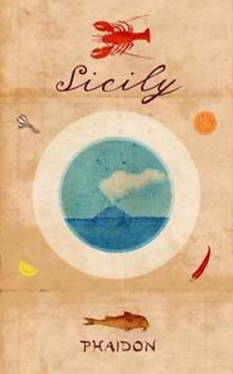
If you’ve ever been captivated by this rugged region…its beauty, its volcanic soil, its hearty foods and its equally hearty wines, pick up a copy of Sicily (Phaidon, 2013) and transport yourself to its charms. This wonderful book tells the history of the island with nature-inspired photographs and authentic recipes from the nine widely diverse regions of the island – – Siracusa, Palermo, Messina, Enna, Racusa, Catania, Trapani, Caltanisetta and Agrigento.
Most dishes reflect the simplicity of the ingredients and the casual style of preparation from Sicilian pizza, Sfincione, and Timballo, the region’s signature layered pasta dish, to Maltagliati con L’Aggrassatu, a flat pasta with a buttery, cheesy, veal sauce. Each chapter begins with a beautiful story giving recipes that employ regional indigenous products.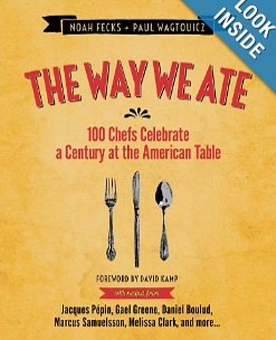
In The Way We Ate: 100 Chefs Celebrate a Century at the American Table (Touchstone, 2013) we can virtually sit at table with today’s most renowned chefs, restaurateurs and food writers (and a singer) from Jacques Pepin, Daniel Boulud and Anita Lo to Chef/Owner Michael Lomonaco of New York’s iconic Windows on the World, Chez Panisse founder Jeremiah Tower and Shanna Pacifico of Back Forty and Back Forty West in Soho. Celebrated food photographers and The Way We Ate Tumblr bloggers, Noah Fecks and Paul Wagtouicz, have created an extravagantly illustrated cookbook chronicling the rich culinary history of the last American century. Here’s the twist. Each chef and food writer has developed an original recipe inspired by a specific year in history from 1901 to 2000.
Local chef extraordinaire José Andrés has dreamed up a re-do of Beijing Glass Noodles, while award-winning chef and cookbook author Jasper White takes a turn at updating Old-Fashioned Cod Cakes. These are super chef-driven recipes, simply described and with beautiful photographs. The first one I’ll prepare will be singer Kelly Hogan’s Breaded Pork Chops with Tart Cherry Caraway Port Wine Sauce. Now where did I stash that bottle of port?
It’s always a good time to throw a party, but in Le Petit Paris: French Finger Food (Hardie Grant, 2013) Nathalie Benezet shows you how to do it the Parisian way. From Croque Monsieur to Foie Gras Burgers and Camembert Fondue, this adorable book offers chic ideas for any hostess or picnicker. I particularly like the petite Salade Nicoise in tiny butter lettuce cups for stylish tailgating, and the easy-to-make Grand Marnier Truffles.
For the hipster on your list, you can’t go wrong with Lust for Leaf: Veggie Crowd-Pleasers to Fuel Your Picnics, Potlucks and Ragers (Da Capo 2013) by Alex Brown and Evan George, a.k.a. Hot Knives. That I don’t know what a “rager” is I’m sure speaks volumes, but no matter, the book is great fun and inspirational in the bargain. The two gonzo journalists and California denizens have made their mark by partying with their friends and sharing the photos of their outdoor cooking adventures. I really enjoyed this book, though it took me longer to type out the title than to flip through it, but not so long I couldn’t get a sense that these two wild and crazy guys are as serious about their bourbon as they are about their BBQ, beer pairings and musical suggestions. Can you make Kale Slaw while drinking Lagunitas beer and digging “Raw Ramp” by T. Rex”? They’d like you to try. Peanut Butter, Banana & Pickle Power Bars? Maybe not. But if I’m drinking the suggested Stone beer and listening to “Clay Stones” by We Are the World, well, why not?
How would you like to have access to wholesome fresh greens loaded with protein and nutrients even in the middle of winter? How about right in your own kitchen all year long and for pennies? Then why not make a garden indoors by growing your own sprouts, a fun and inexpensive activity I haven’t revisited since my college days.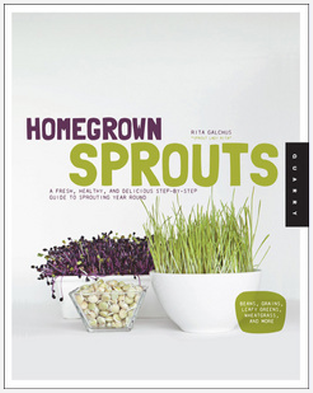
Rita Galchus, author of Homegrown Sprouts (Quarry Books 2013), makes it a snap, to grow your own sprouts explaining three major methods – – from growing them in a Mason jar or using a hemp-sprouting bag or even a sprouting tray specifically made for this simple task. Anyone can do it and kids will get a kick out of growing their own food. A big trend now is chia seed pudding, which I have seen at Le Pain Quotidian and Whole Foods. But why not make your own? It’s a snap.
The book has 200 helpful photographs and ideas for how to incorporate nutrient-rich sprouts into your breads, salads, juices and spreads. You can even share these phyto-packed treats with your pets. Most sprouts only take a few days to pop out of their tiny seeds and provide a super-nutritional food source. Try radish, barley, arugula, rice, flax and sesame, or grow your own snow pea and sunflower shoots used by chefs in some of the best restaurants.
Local and Notable 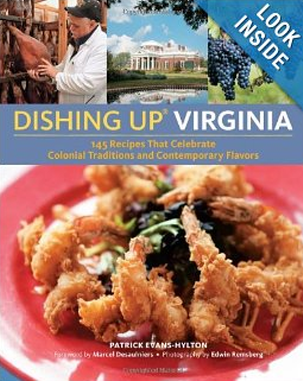
One of Virginia’s most colorful and delightful food and wine writers comes to us from the Hampton Roads and Chesapeake regions. Patrick Evans-Hylton, co-host of NPR’s locally produced show What’s Cooking Wednesday and food reporter for The Hampton Roads Show has written a marvelous compendium of Virginia recipes. It’s called Dishing Up Virginia. Using his extensive knowledge of colonial foods and recipes from some of the Commonwealth’s best chefs, Evans-Hylton has crammed the book with evocative photos from bay to farm. It’s a marvelous collection that belongs on every Southern cook’s shelf. Follow Patrick at www.PatrickEvansHylton.com.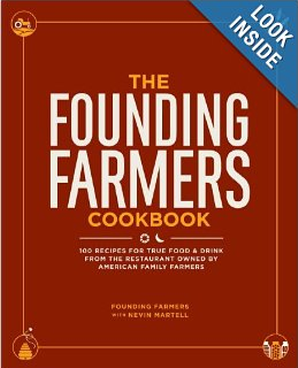
Local food writer and pop culture archaeologist Nevin Martell has teamed up with Farmers Restaurant Group and Executive Chef Joe Goetze to create a cookbook showcasing the recipes from Founding Farmers restaurant. The Founding Farmers Cookbook: 100 Recipes for True Food & Drink from the Restaurant Owned by American Family Farmers (Andrew McMeel Publishing 2013) is a healthful, casual, rustic style of cuisine featuring recipes that use the farm-sourced products incorporated in their seasonal menus. If you’ve ever dined at the DC-based restaurant you’ve most likely swooned over the Seven-Cheese Mac & Cheese Salmon, Crab and Lobster Devil-ish Eggs, or the Many Vegetable Salad with 13 different veggies. Healthy never tasted so heavenly! These recipes and dozens of other well-loved classic dishes are given here. As Founding Farmers co-partner Mike Vucurevitch puts it, “ A lot of dishes were based on my travels throughout America, which have taken me to every state. Sometimes my life feels like that Johnny Cash song “I’ve Been Everywhere”. To catch more of Martell’s adventures in food writing follow him at www.NevinMartell.com.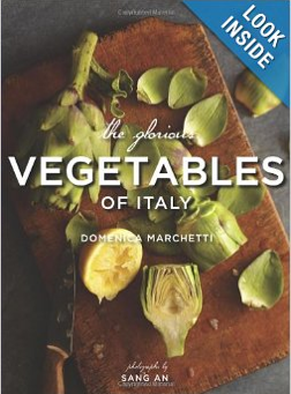
Italian cookbook writer and regular contributor to the Washington Post, Domenica Marchetti, tackles her fifth topic with The Glorious Vegetables of Italy (Chronicle Books 2013). Here veggies get 100 chances to shine. It is a tribute to her Abruzzian mother who taught her to roll pasta as a child that Marchetti is expert in all things from an Italian kitchen, both traditional and modern. The vegetable-centric recipes range from soups to antipasti and main dishes to desserts. Some include meat but not as the featured performer. Grilled Lamb Spiedini on a Bed of Eggplant Caponata, Carrot Polenta Cake with Marsala and Pumpkin Gelato show Marchetti’s versatility in the kitchen. Pizza, calzone, panini and pastas are well represented here too. Exquisite photographs by Sang An highlight the beauty of these soulful dishes.
On January 23rd Marchetti will present a five-course dinner featuring dishes from the cookbook at the National Press Club in DC. Wine pairings are included. For details on the ticketed event visit http://press.org/events/verdure.
In Visual Eats: A Behind-the-Scenes Look at Modern Italian Cooking (Keith Publications, 2013) renowned DC chef Enzo Fargione shares stories of his upbringing in Turin, Italy alongside insider tales of his restaurant experiences. Known for his culinary sorcery in dishes that stunned the food world when he was at Teatro Goldoni (like the dazzling Four-Minute Smoked Branzino Carpaccio served in a cigar box which your humble scribe has had but once and never forgotten) are here revealed and tailored for the home cook. Now helming the kitchen at his own DC restaurant Osteria Elisir, Fargione aims to reach out and teach the average cook how to be a wizard in the kitchen.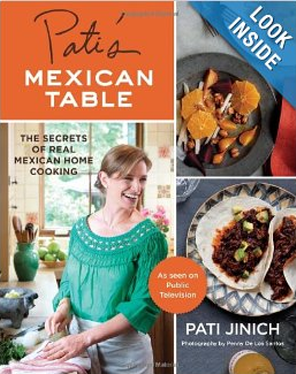
Pati Jinich, Executive Chef at DC’s Mexican Cultural Institute and host of the PBS television series Pati’s Mexican Table: The Secrets of Real Mexican Home Cooking (Houghton, Mifflin, Harcourt, 2013) has written a companion cookbook of recipes from the show. As in her show the petite blonde with the fiery cuisine shows how you can easily create regional Mexican dishes from Veracruz to Michoacan in your own home. Follow her on www.PatisMexicanTable.com.
Cocktail Confessional 
In Shake, Stir, Pour (Quarry Books, 2013) by Philadelphia mixologist Katie M. Loeb you’ll find beverage recipes both with and without the use of spirits. I’m a sucker for any book that tells a story about each concoction and Loeb does. There are more than four dozen nicely photographed recipes that use her basic syrups and infusions. I loved the Rhubarb, Pear and Thai Basil syrups, as well as infusions like Jalapeno-Cilantro Vodka and Limoncello. The book’s foreword is penned by uber-chef and Philly restaurateur, José Garcés, which gives you an idea of the company Loeb keeps.
As a noted bartender, sommelier and creator of craft cocktails who has written for Bon Appetit, the Los Angeles Times and Food & Wine, Loeb will have you making and shaking up a “Gin-Gin Mule” or a “Rosalind Russell”, a throwback cocktail from New York City’s Stork Club Bar Book published in 1946. She even gives a recipe for the Aquavit that’s used in the drink.
|










 Makes one 10-inch Bundt cake
Makes one 10-inch Bundt cake























































